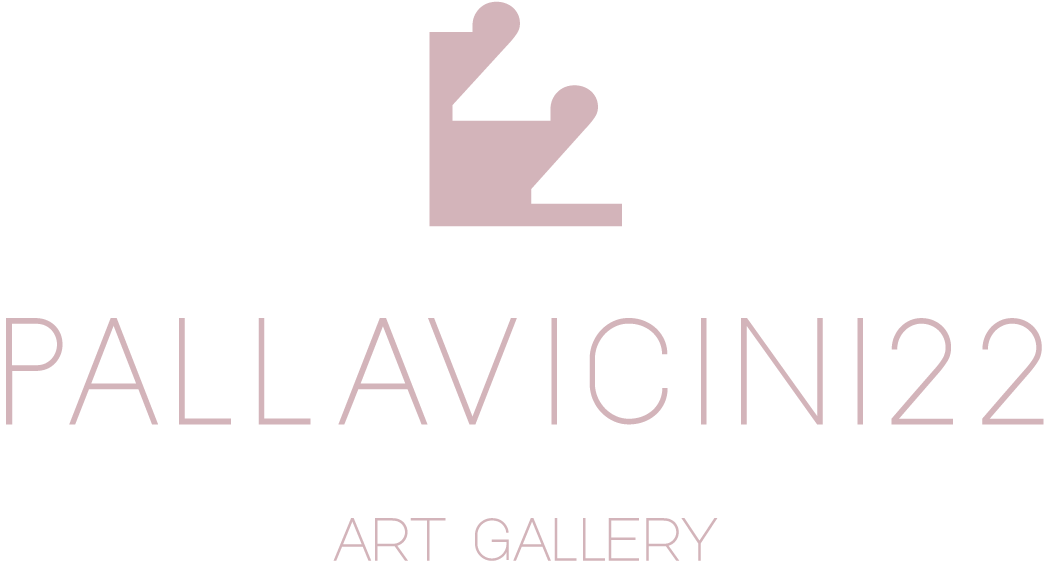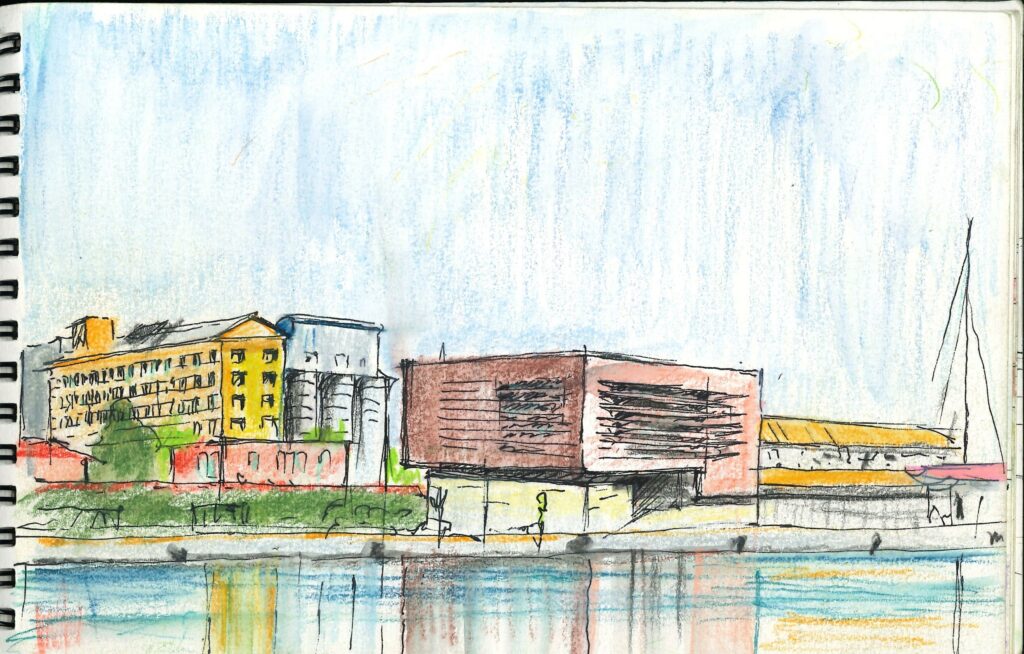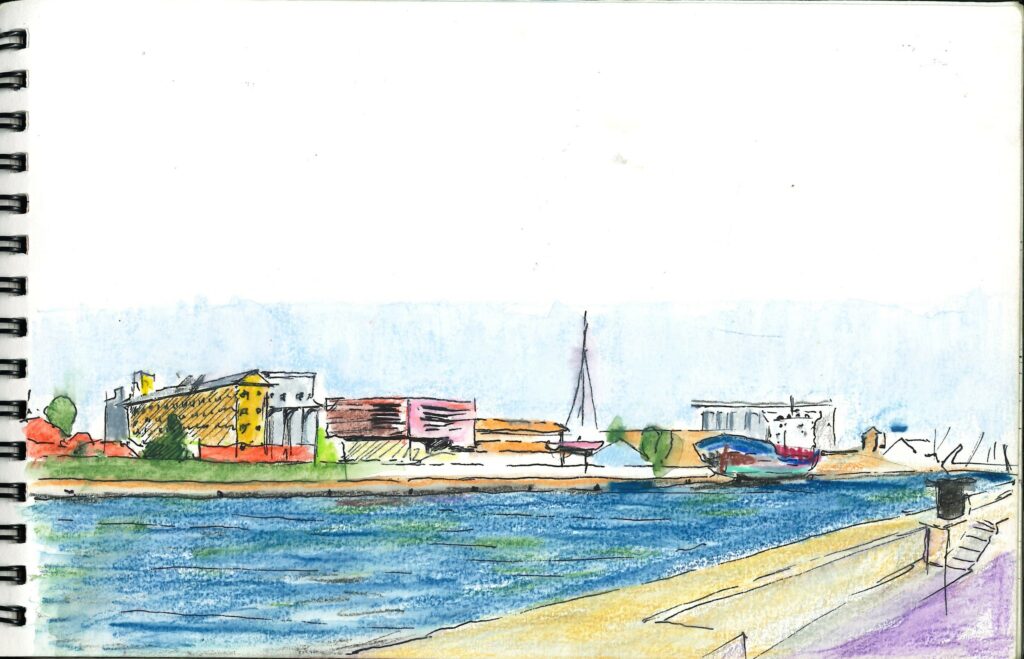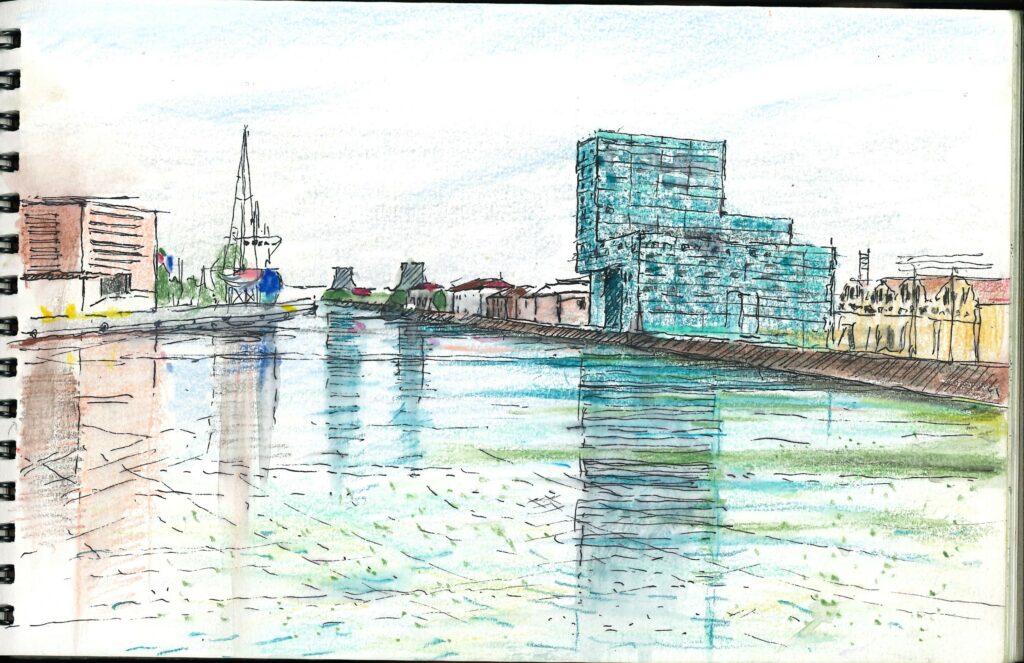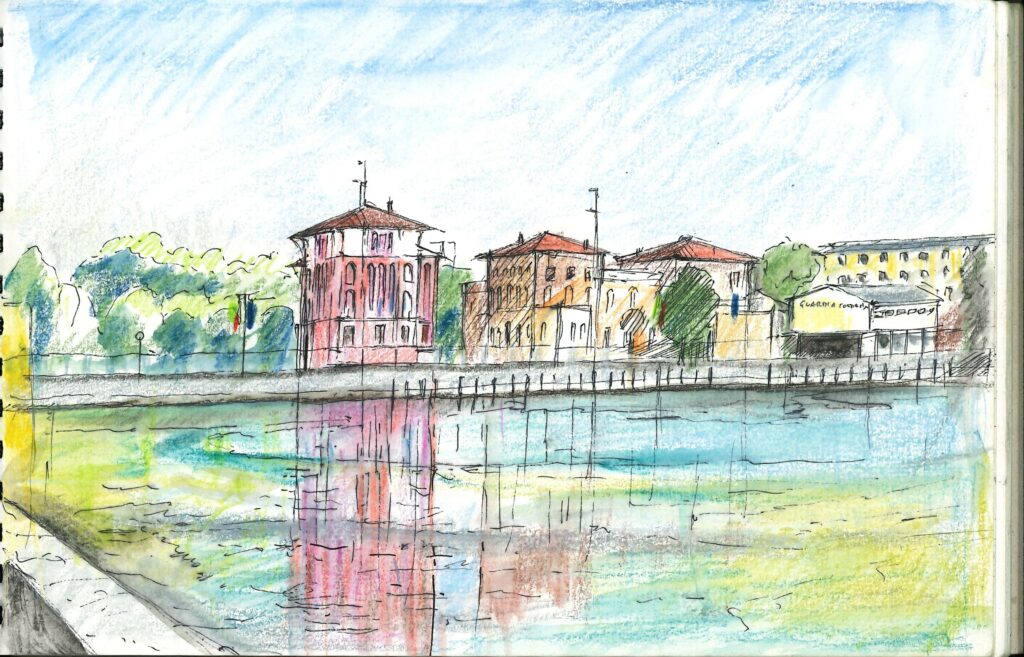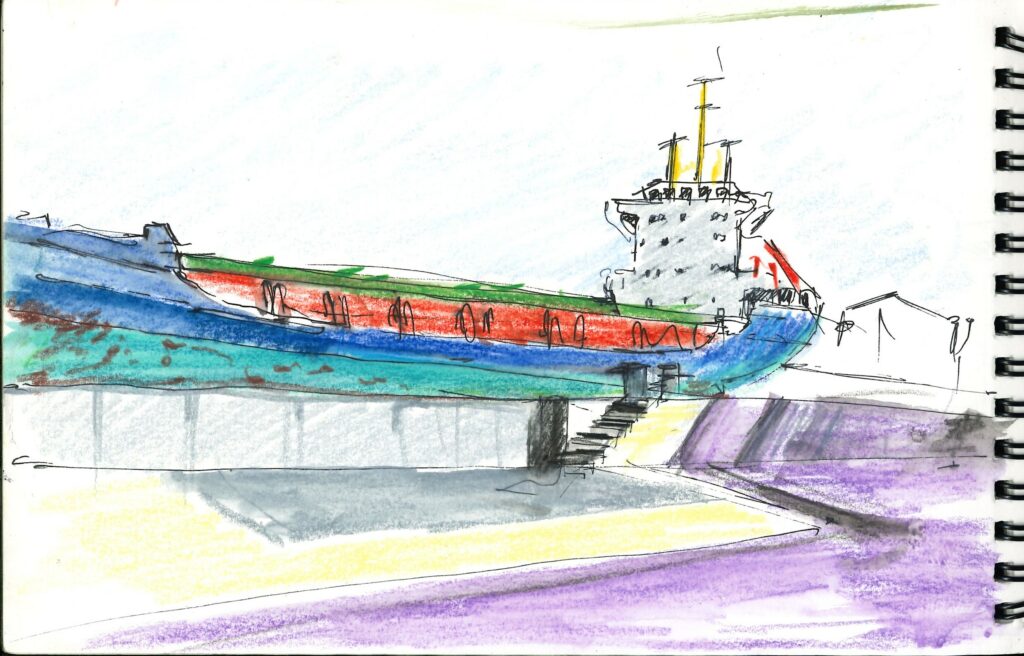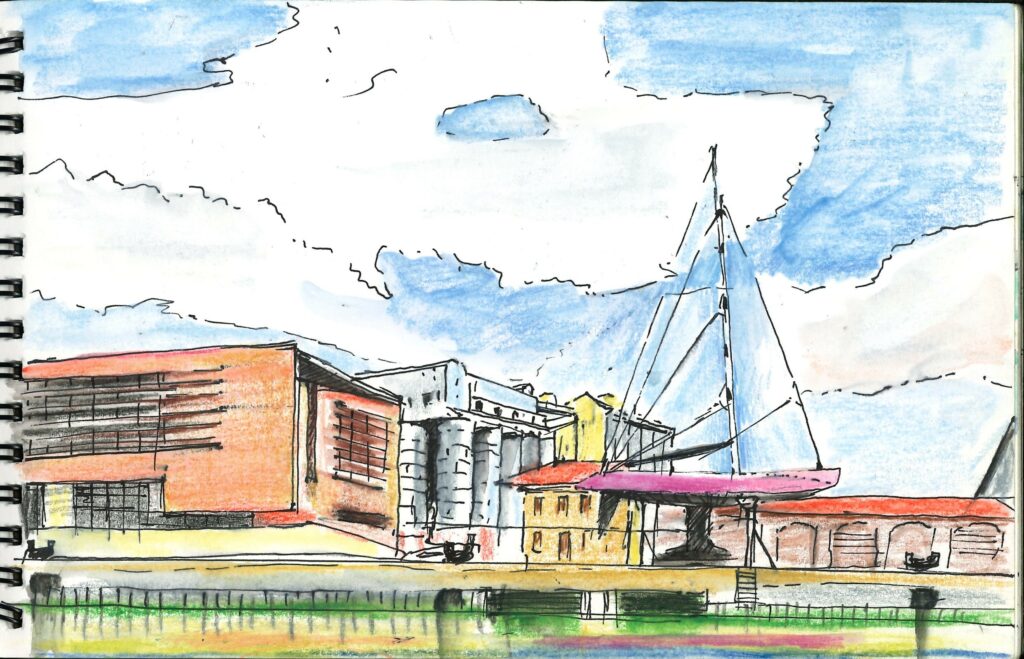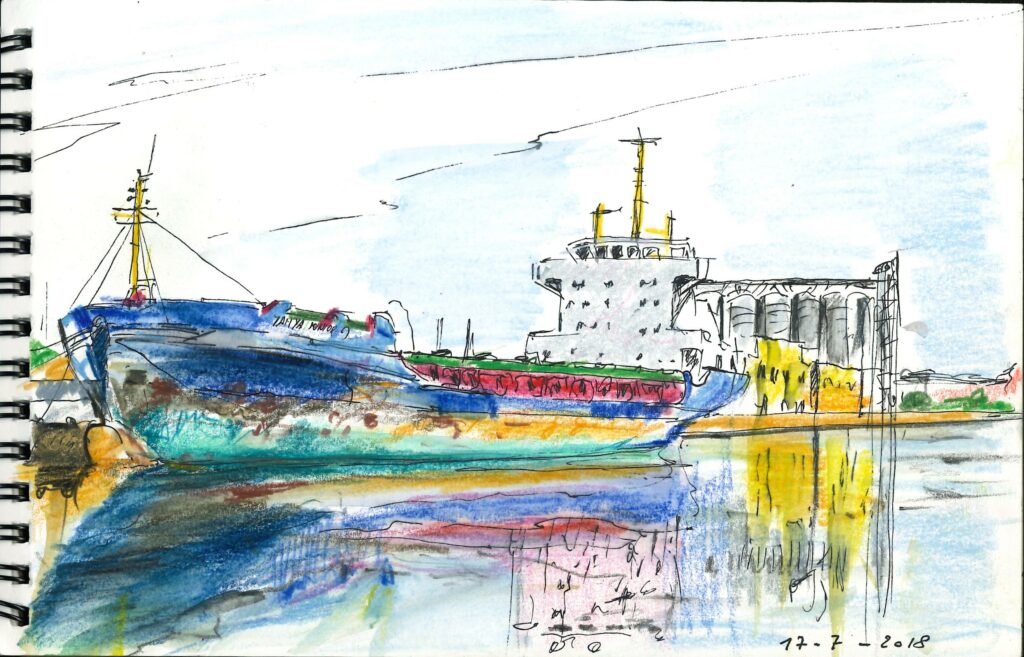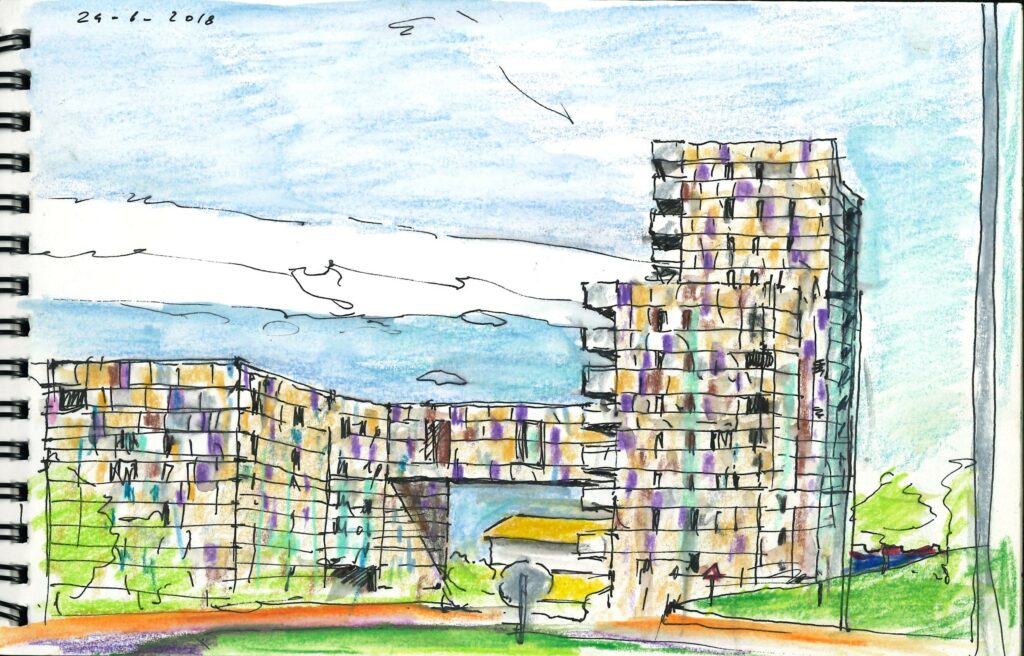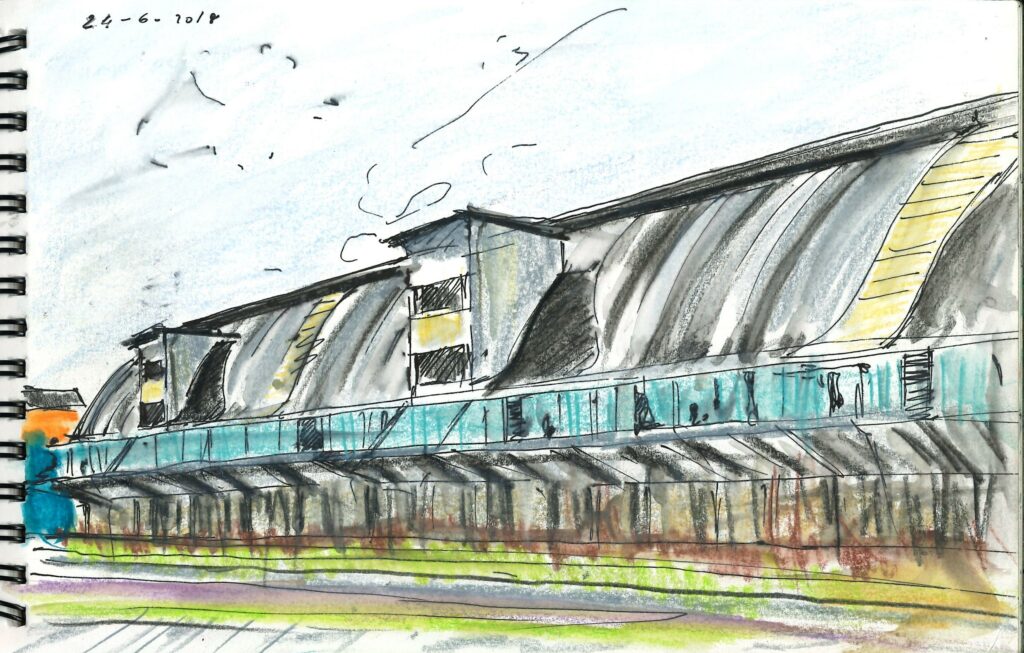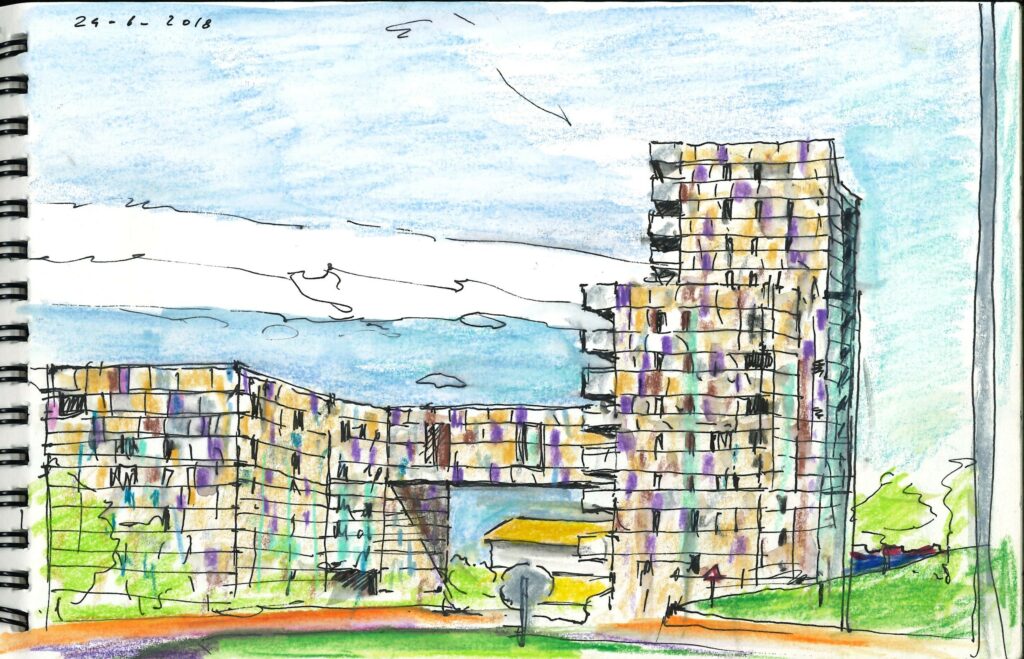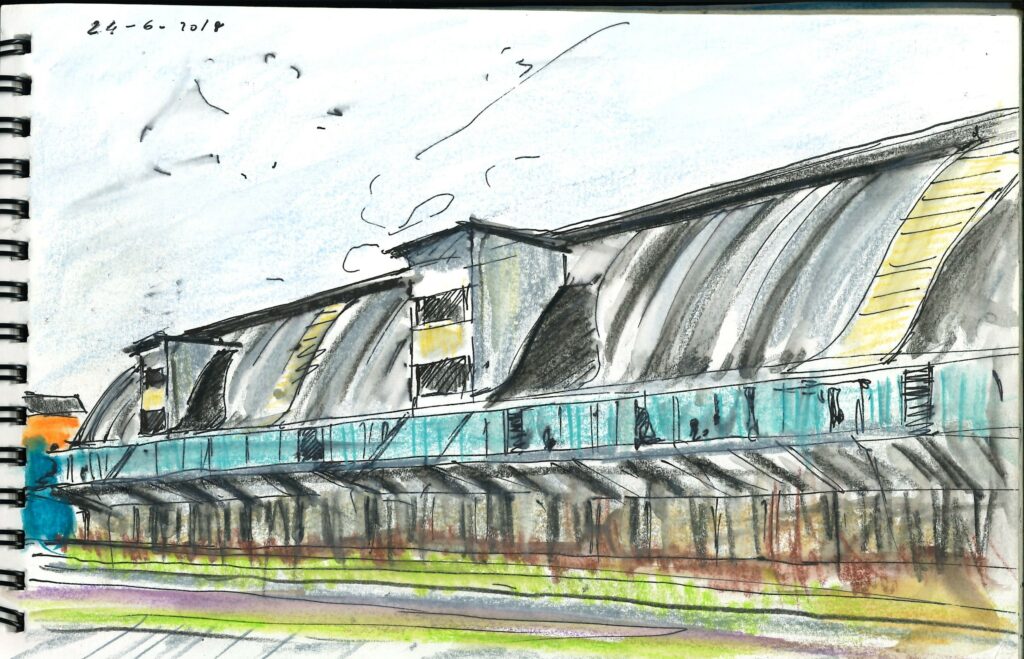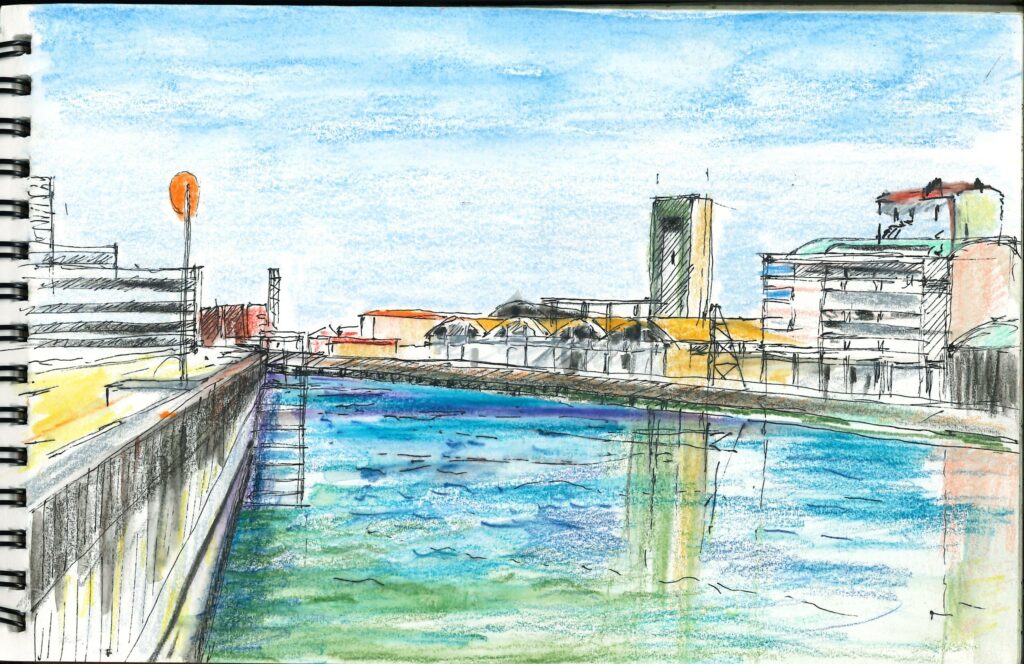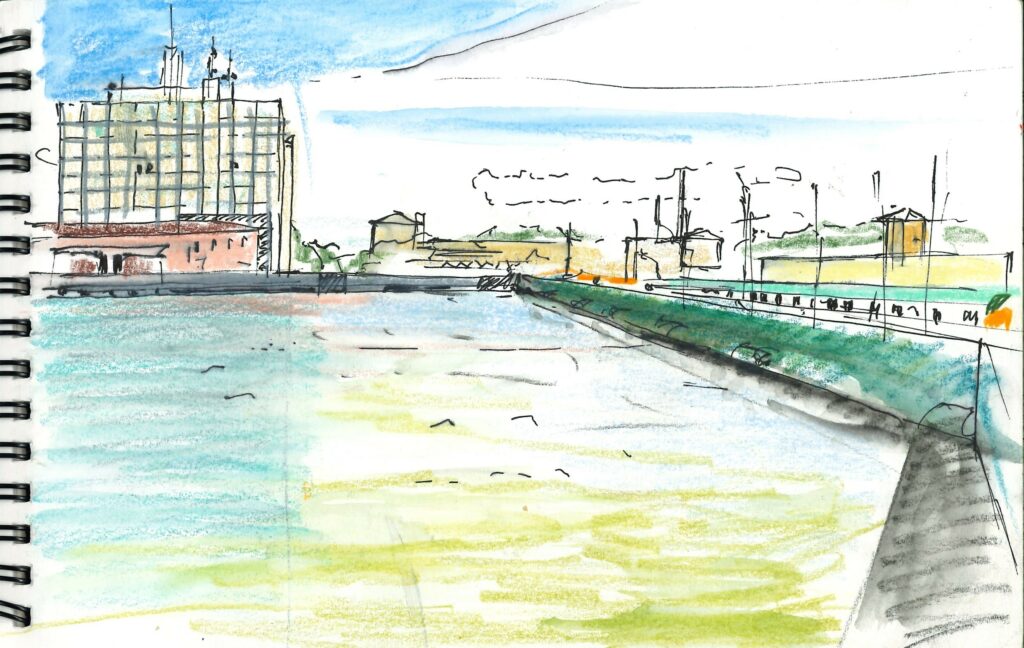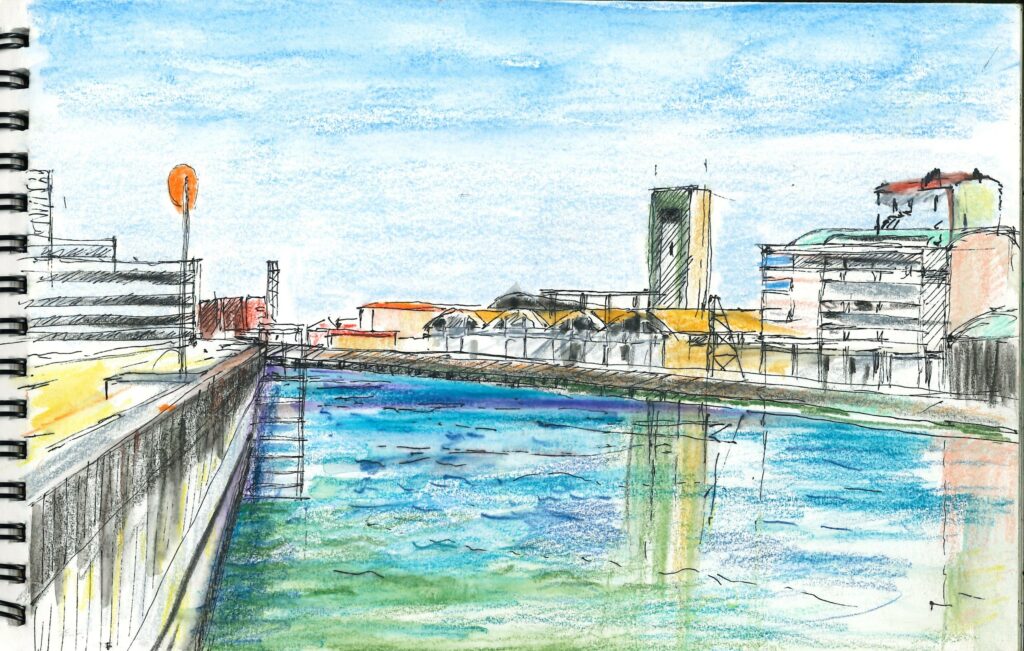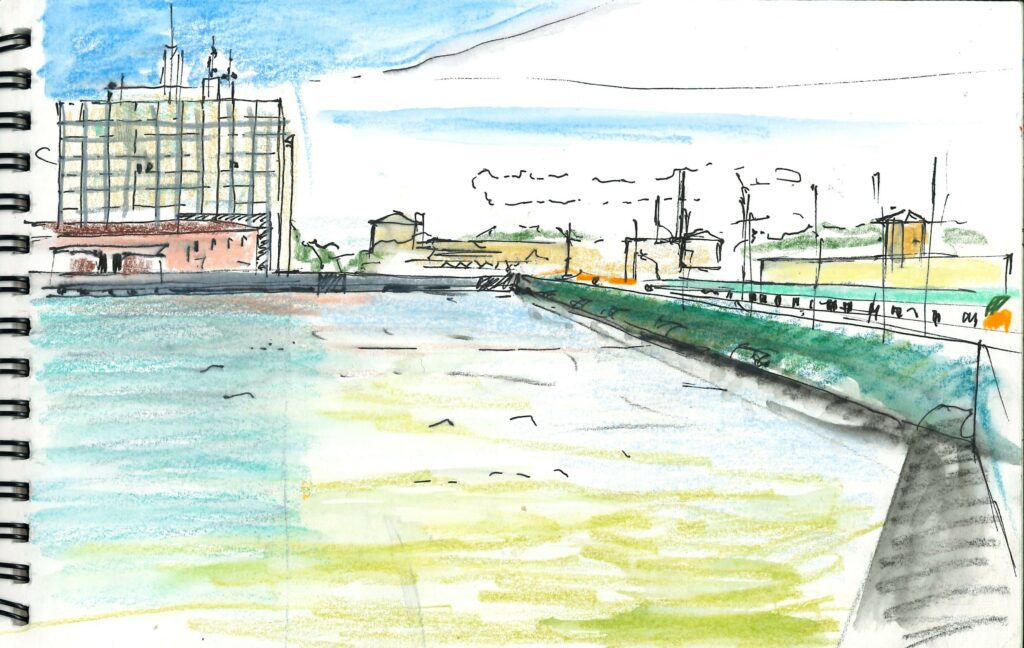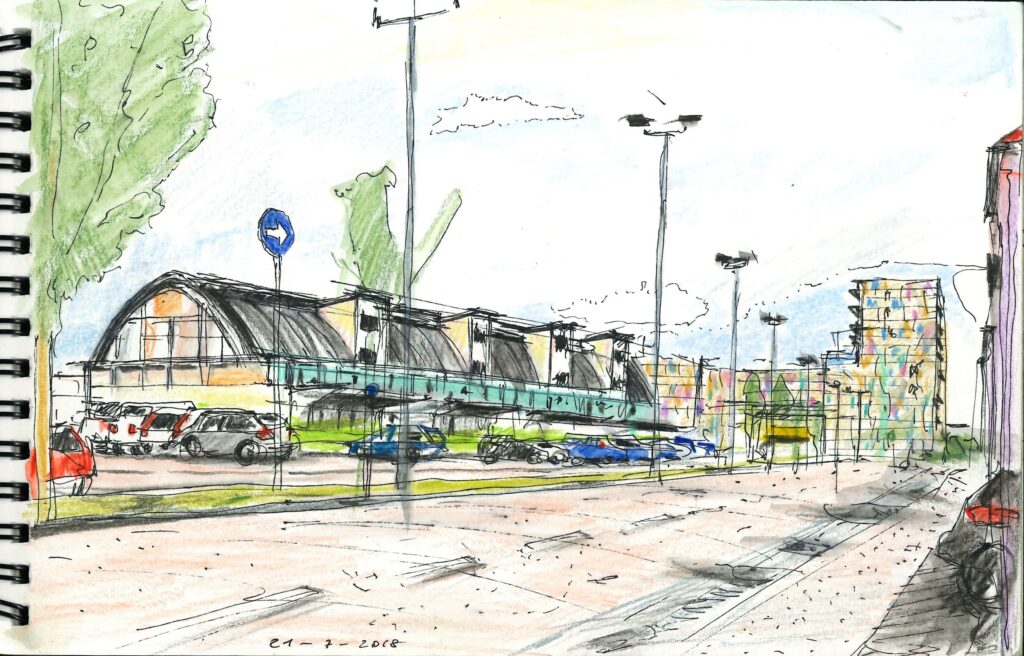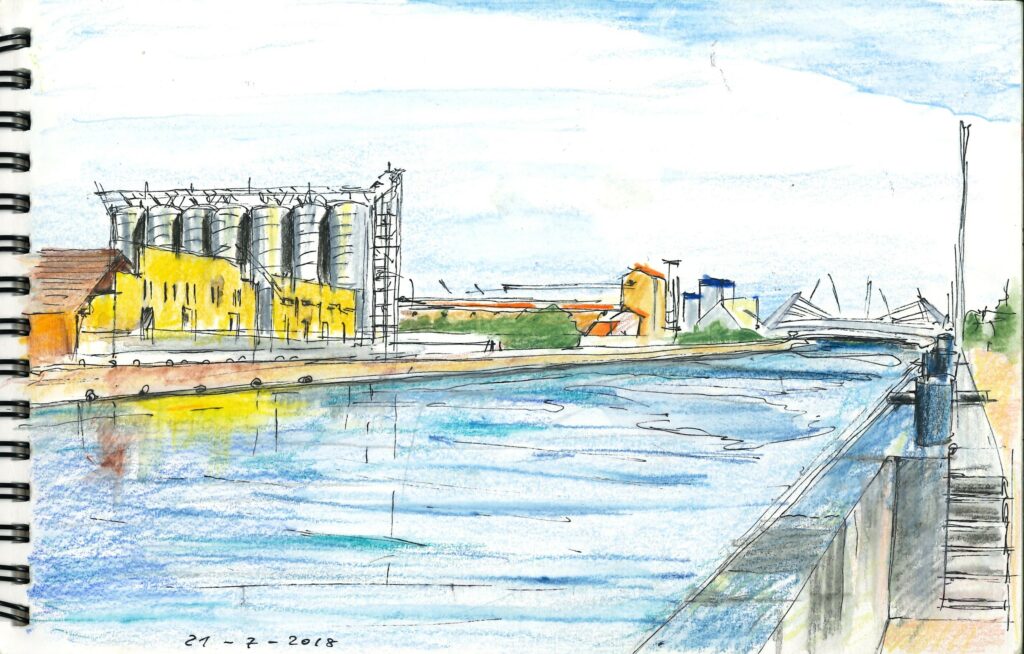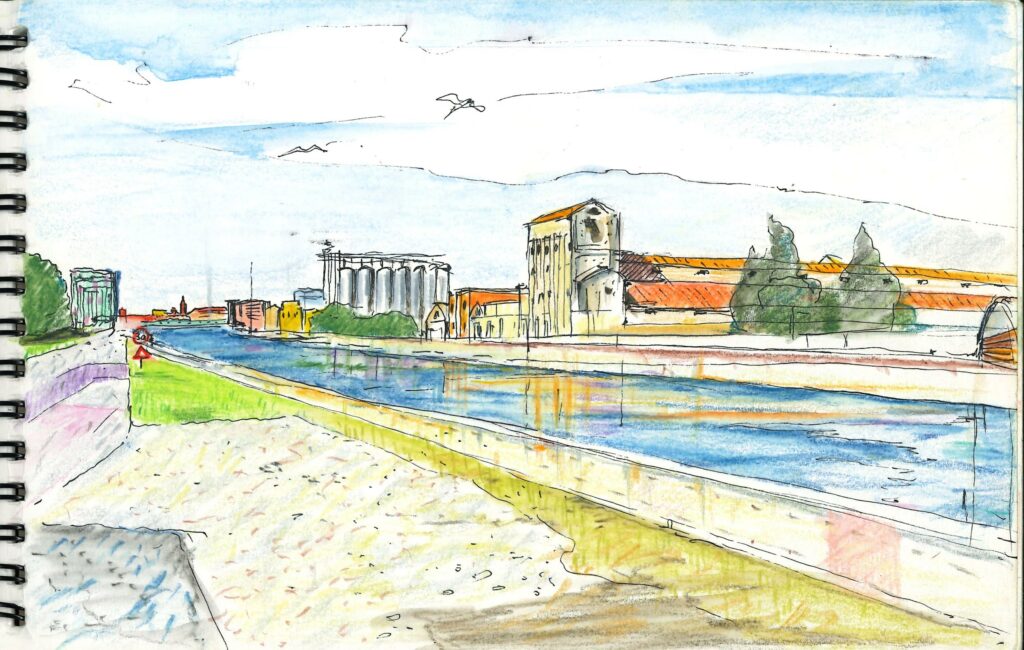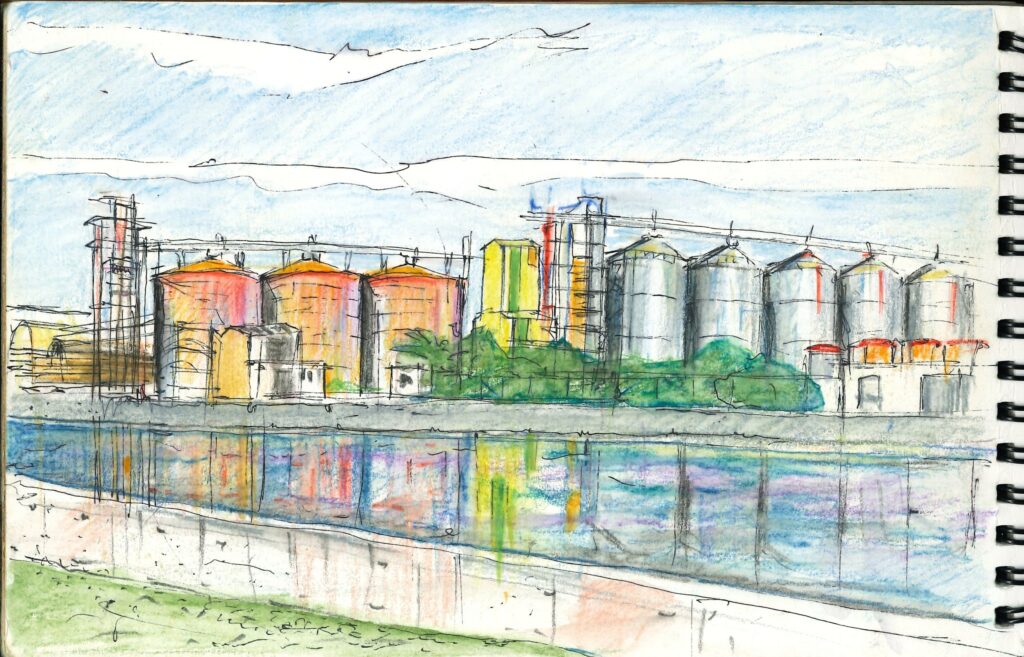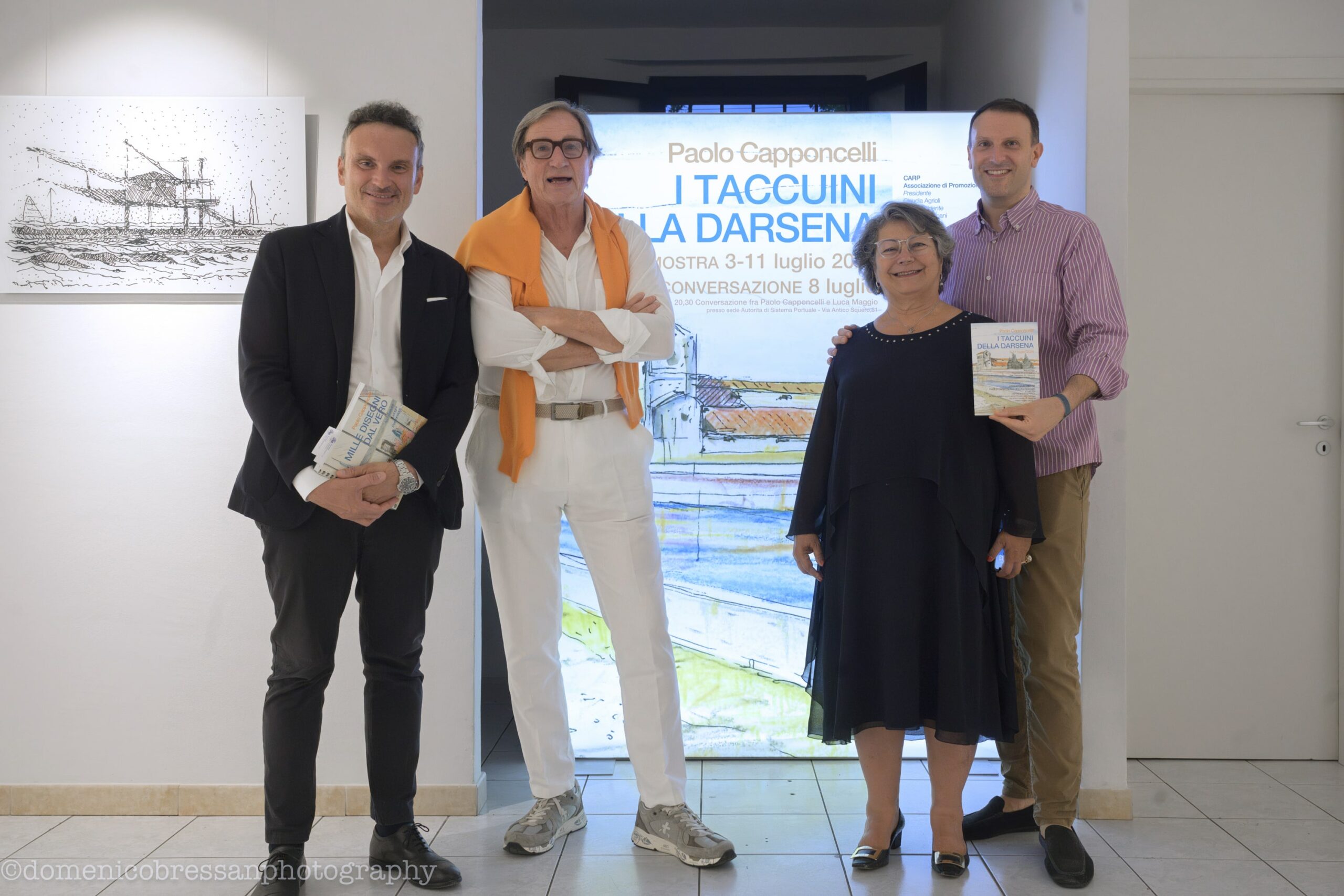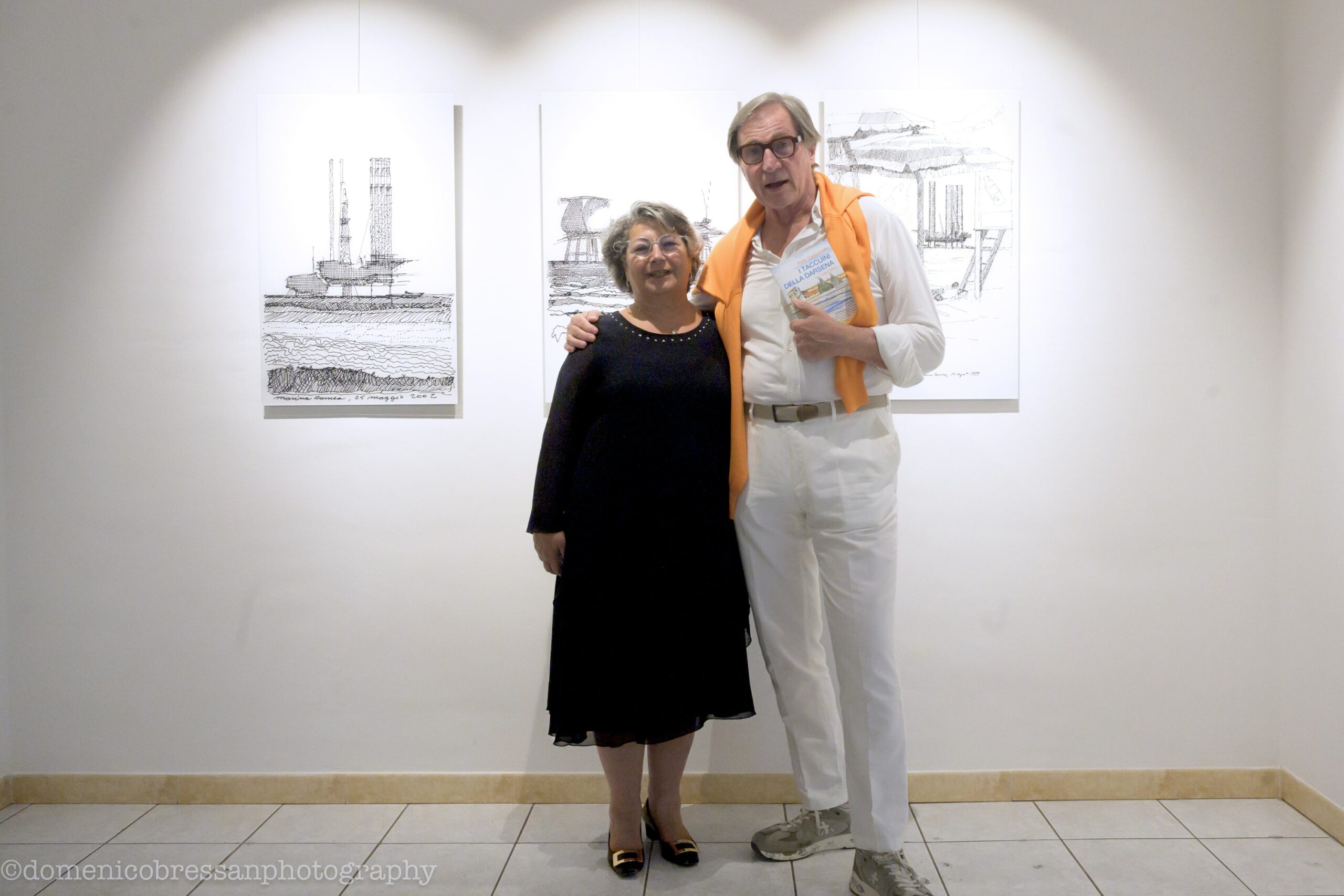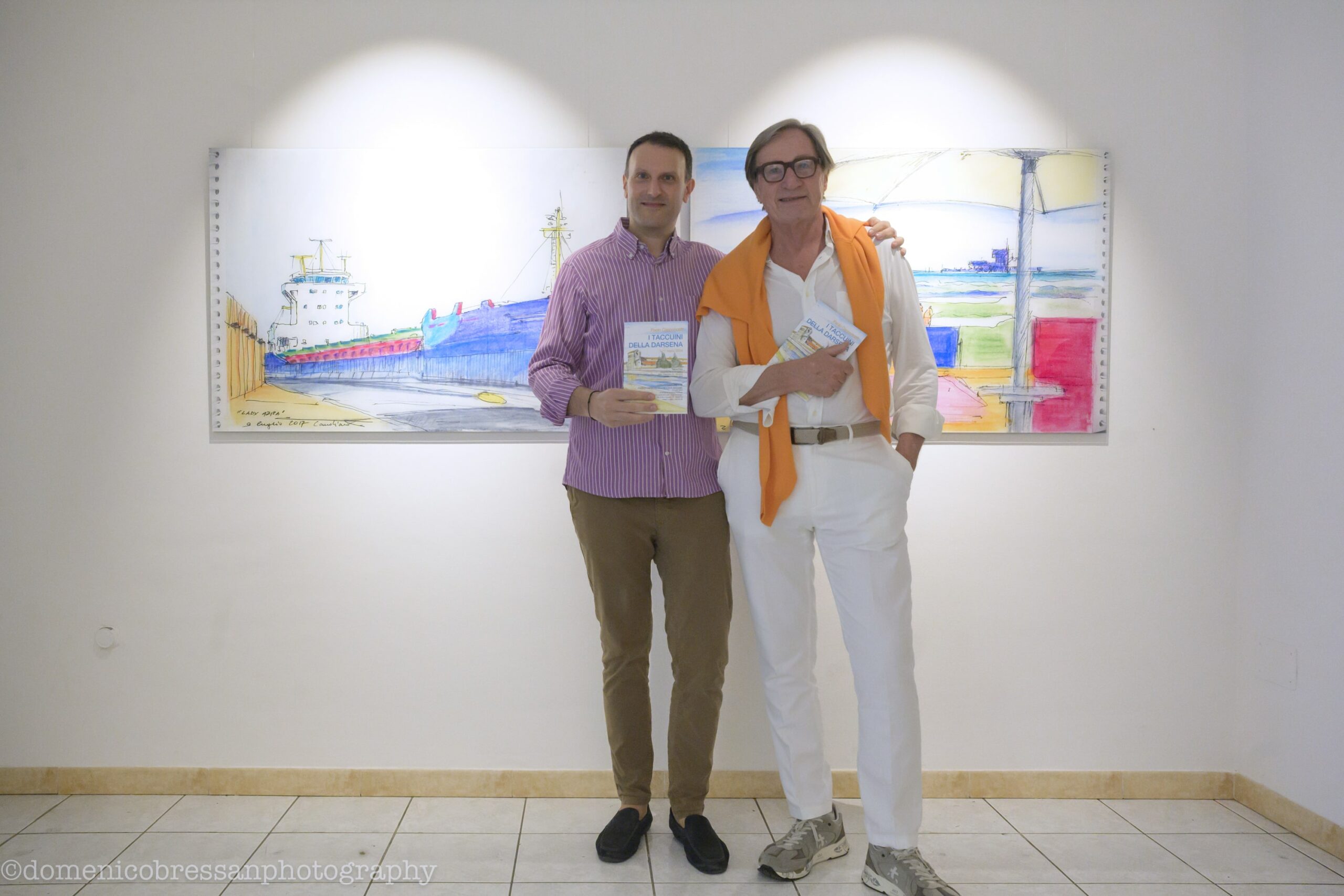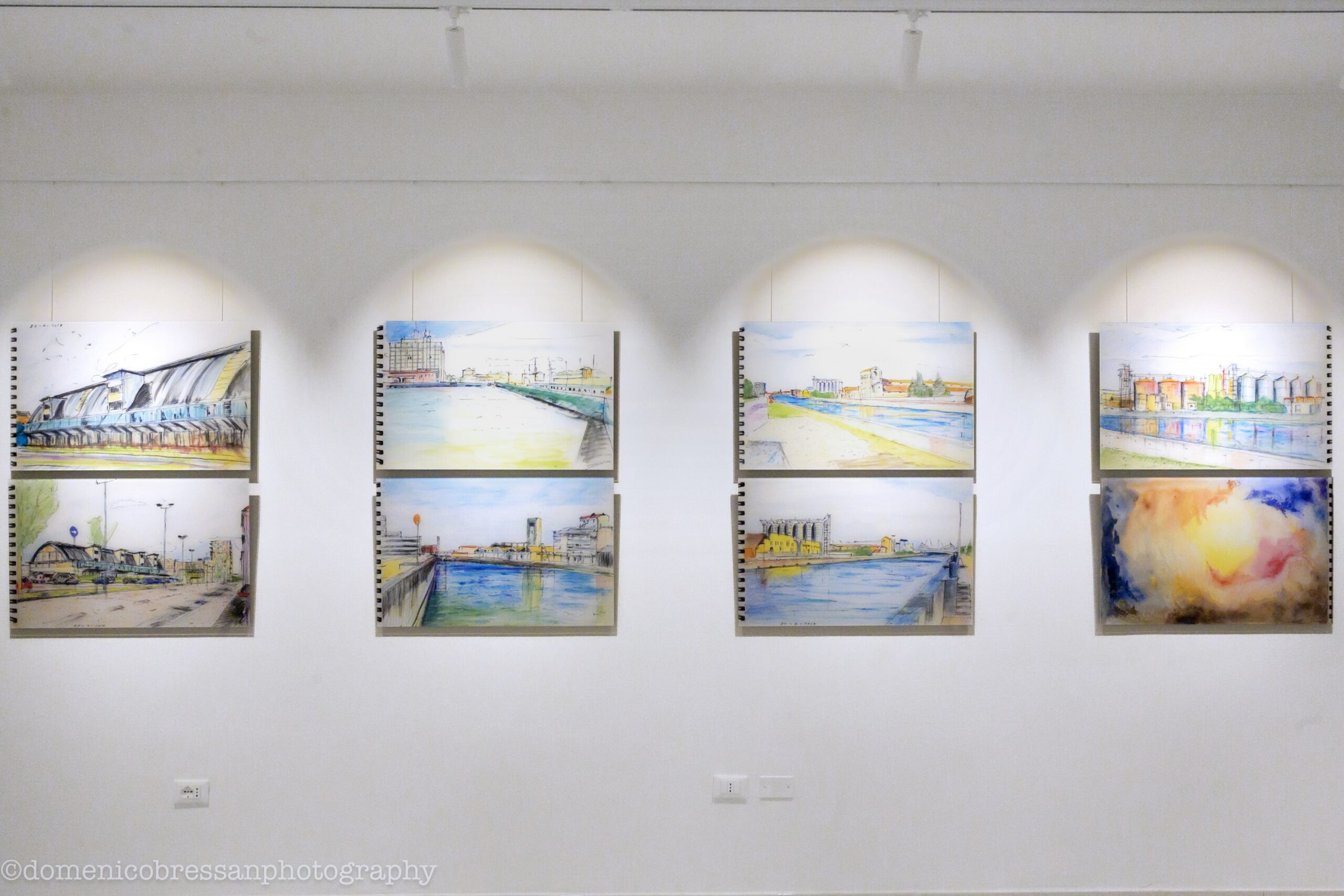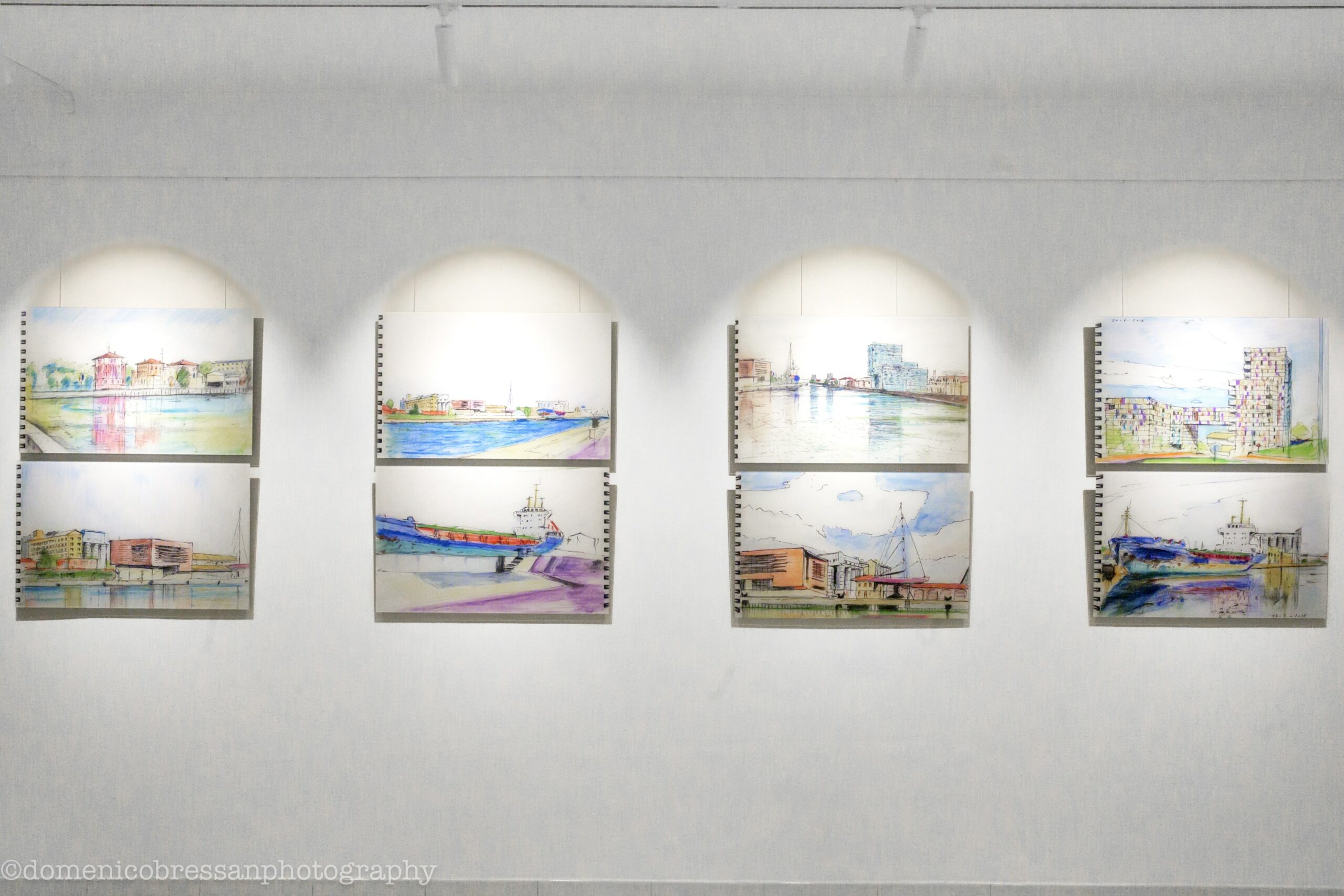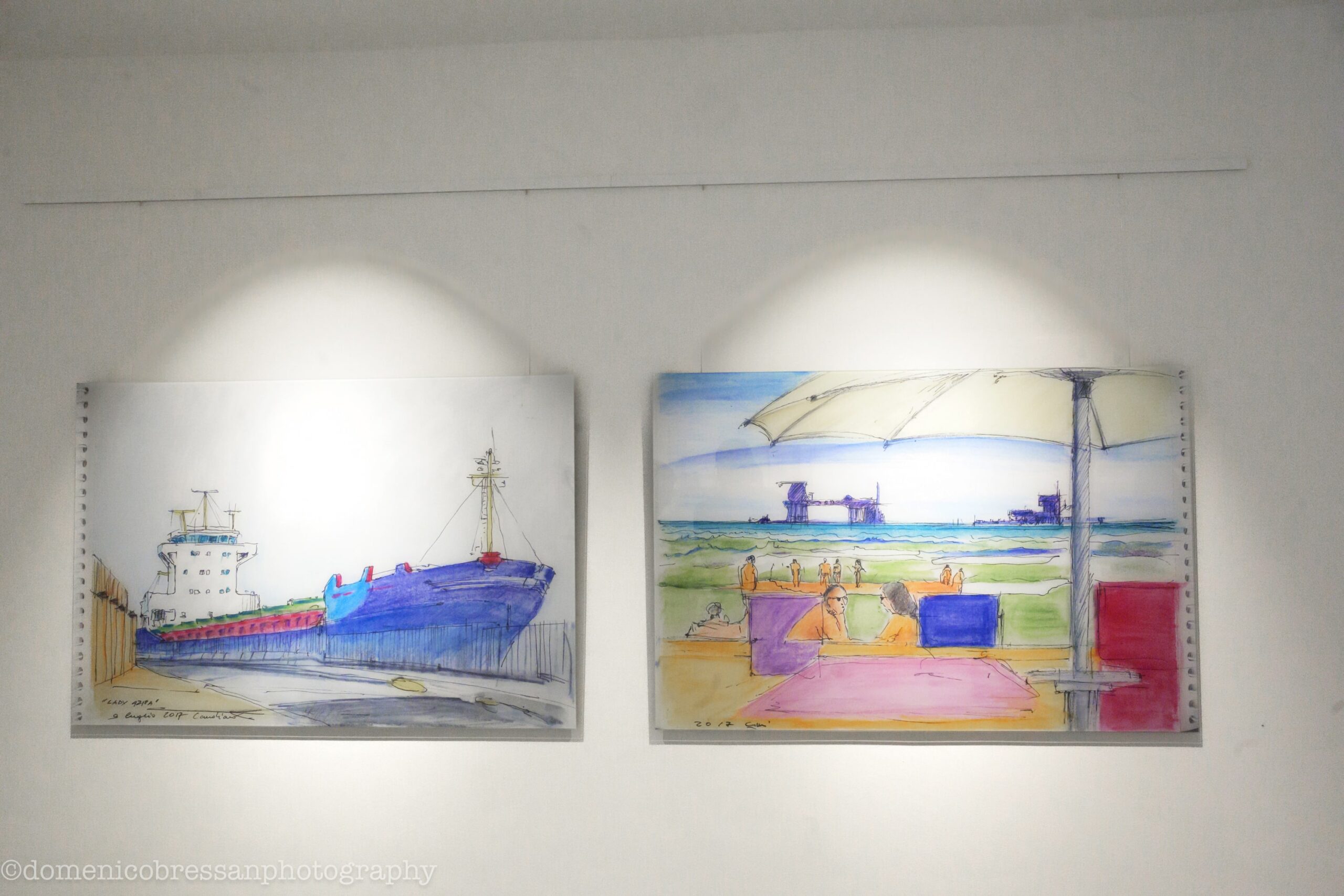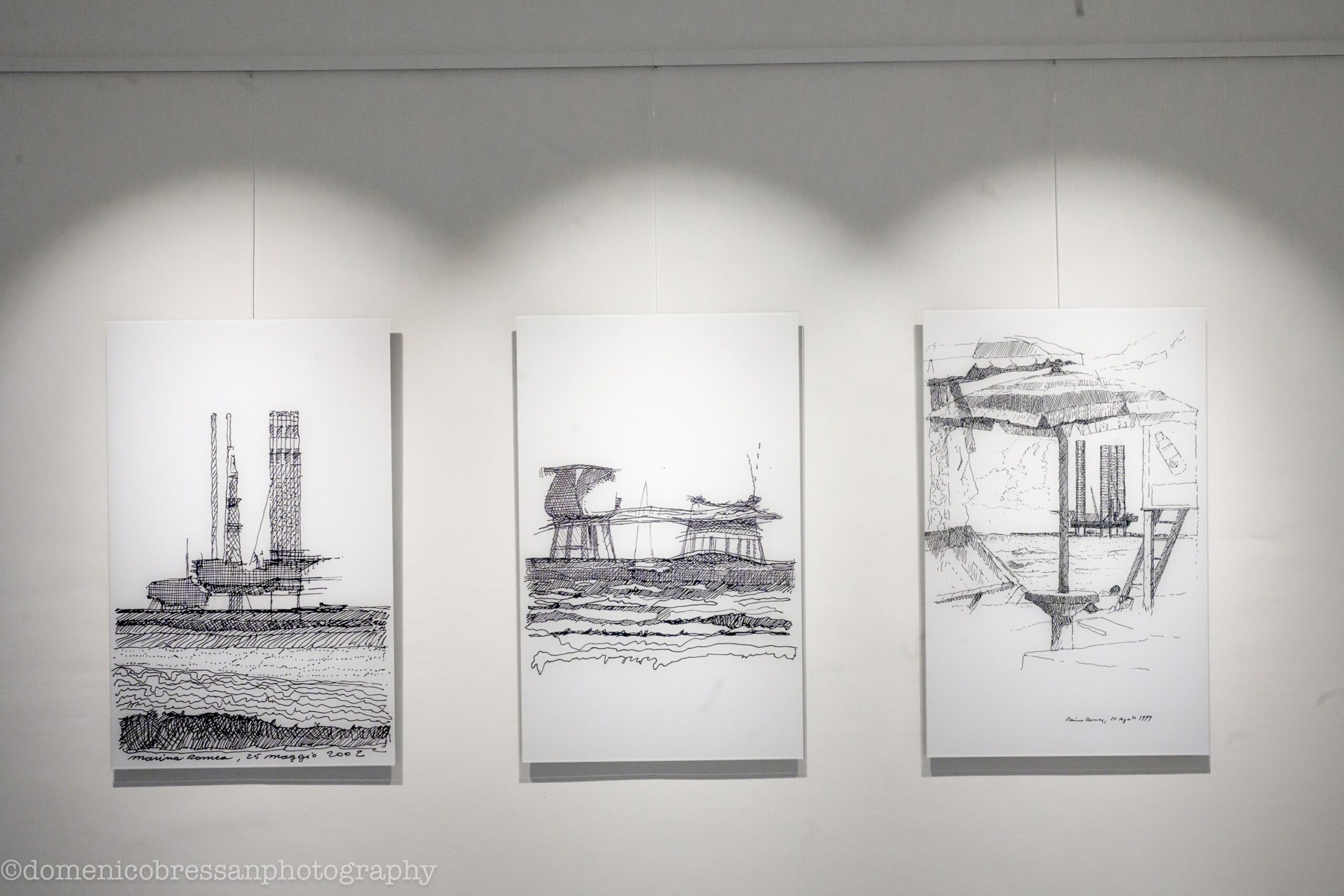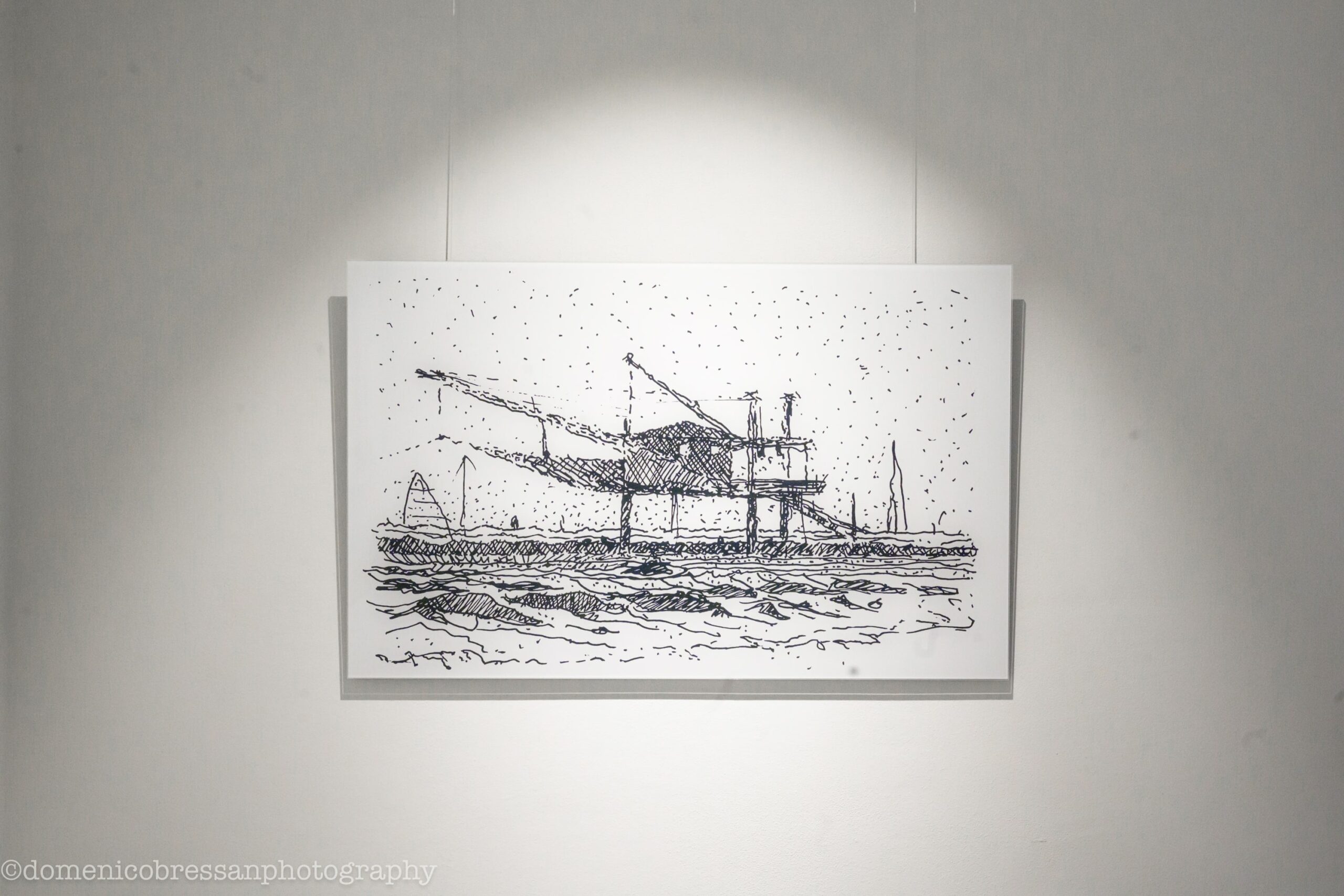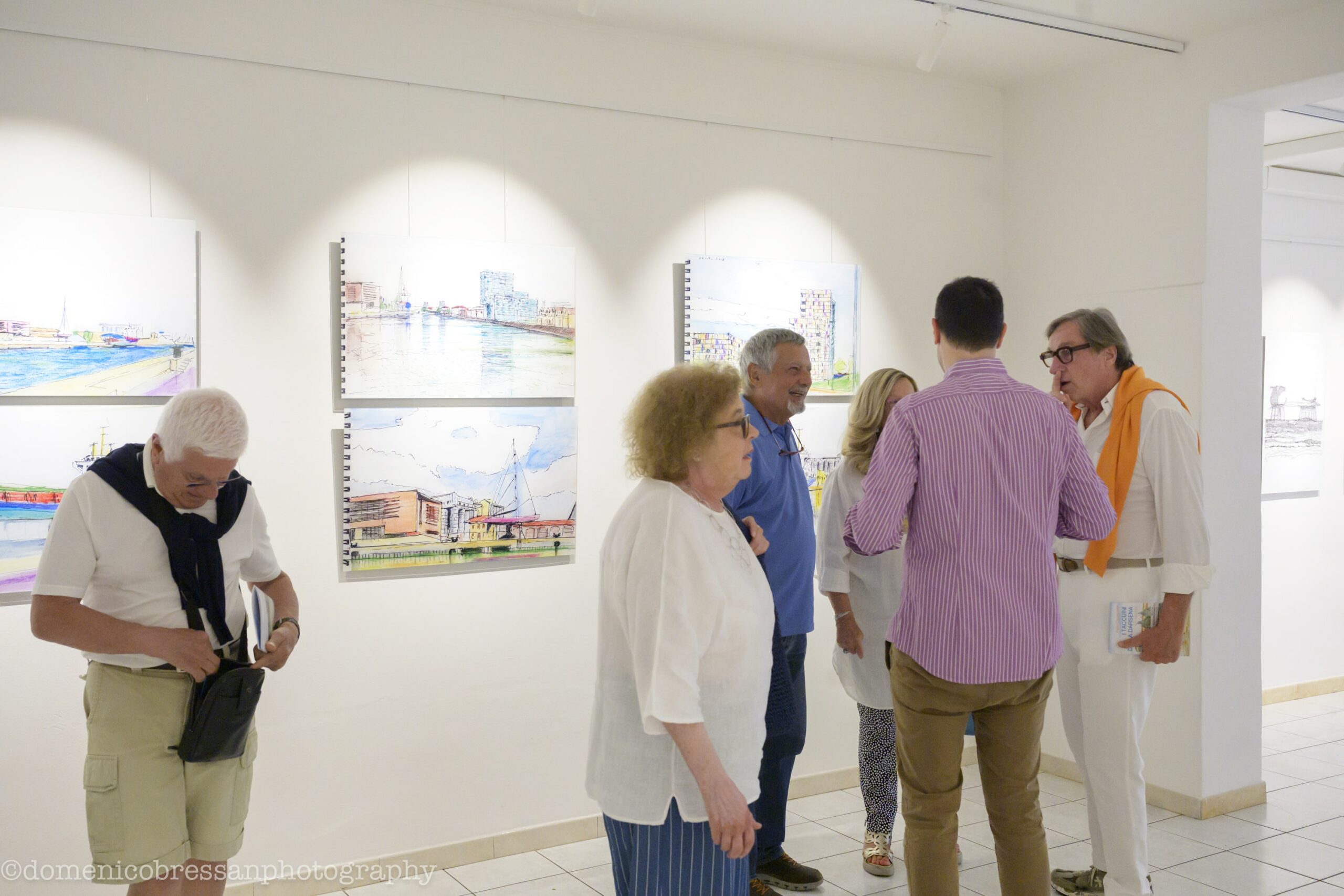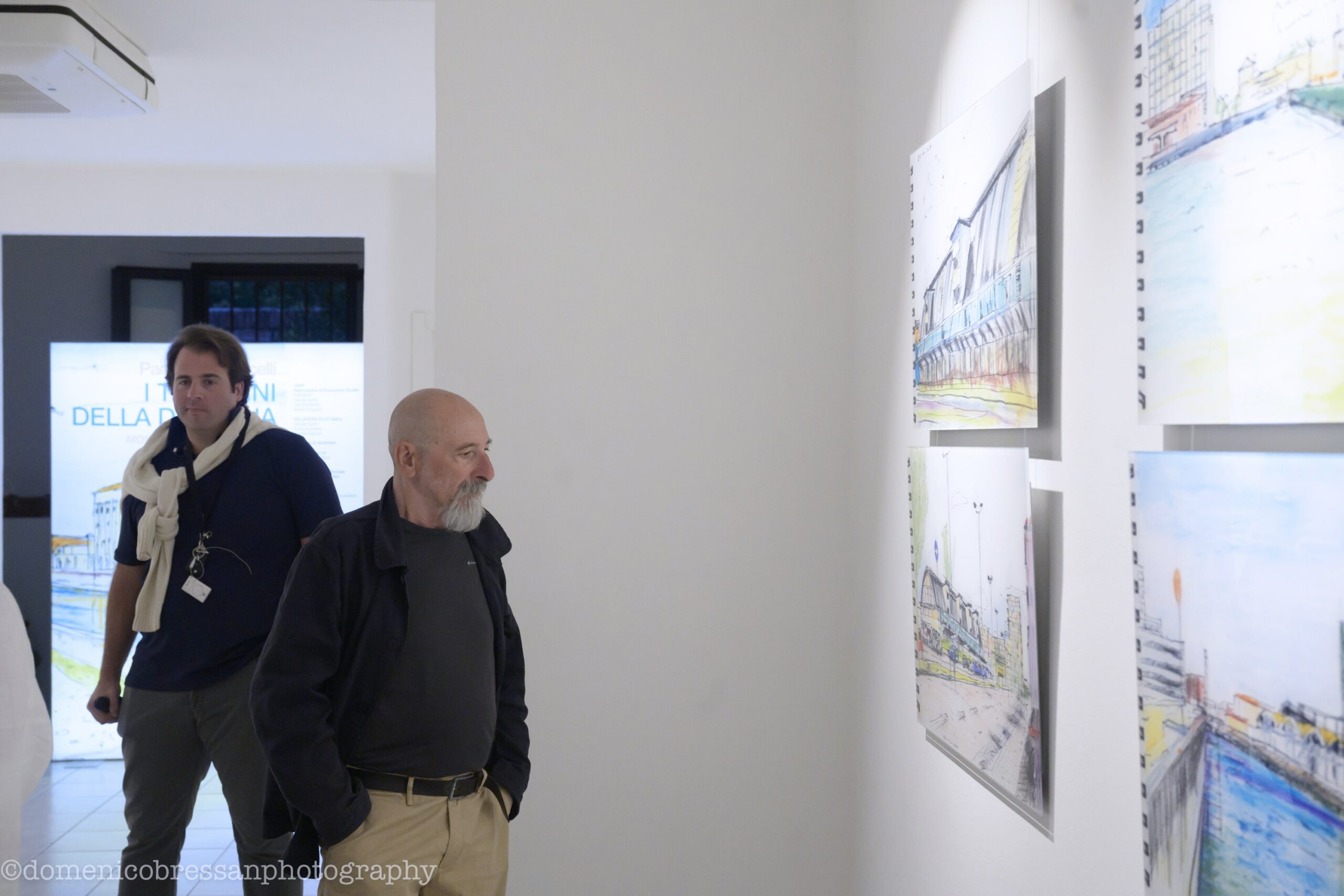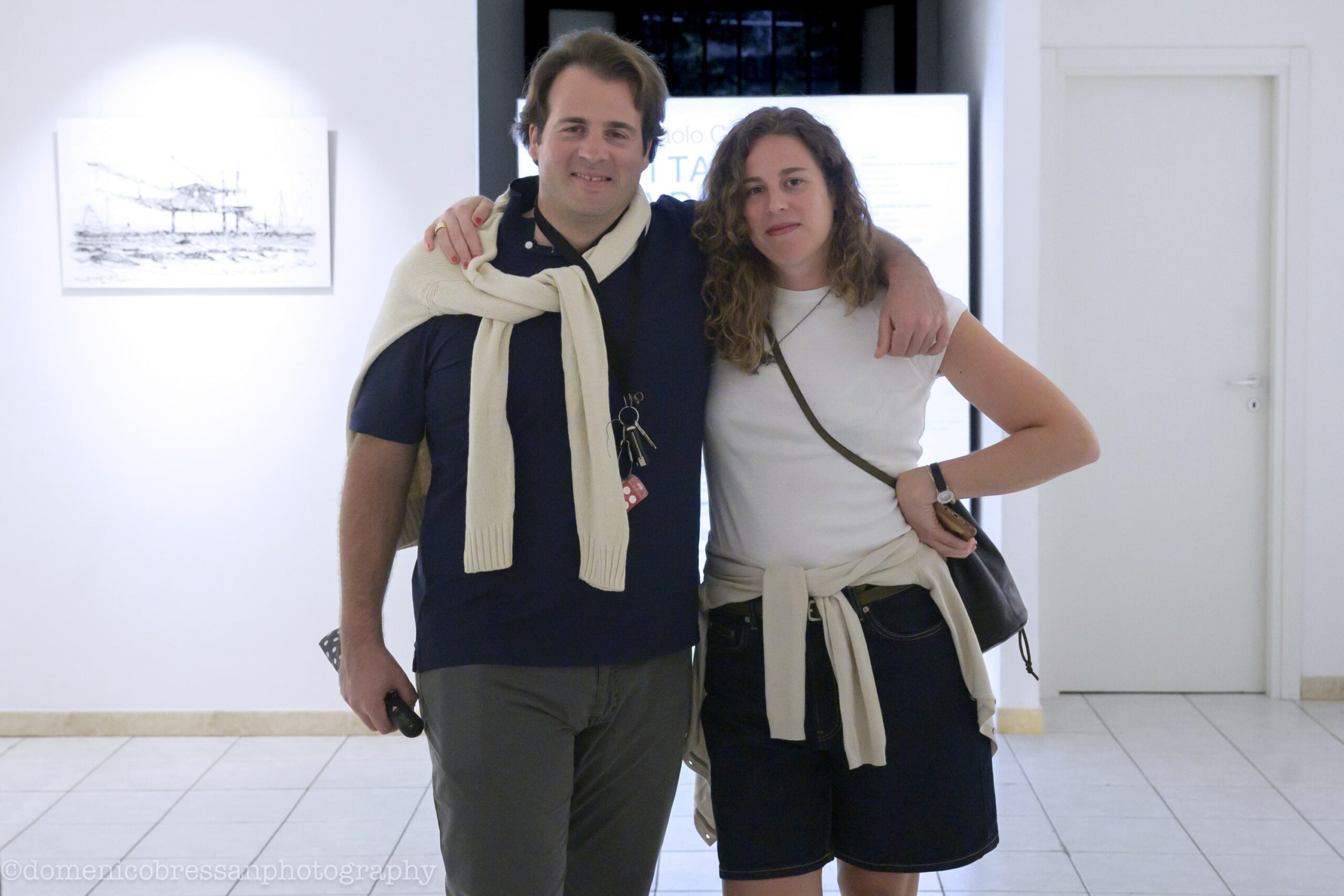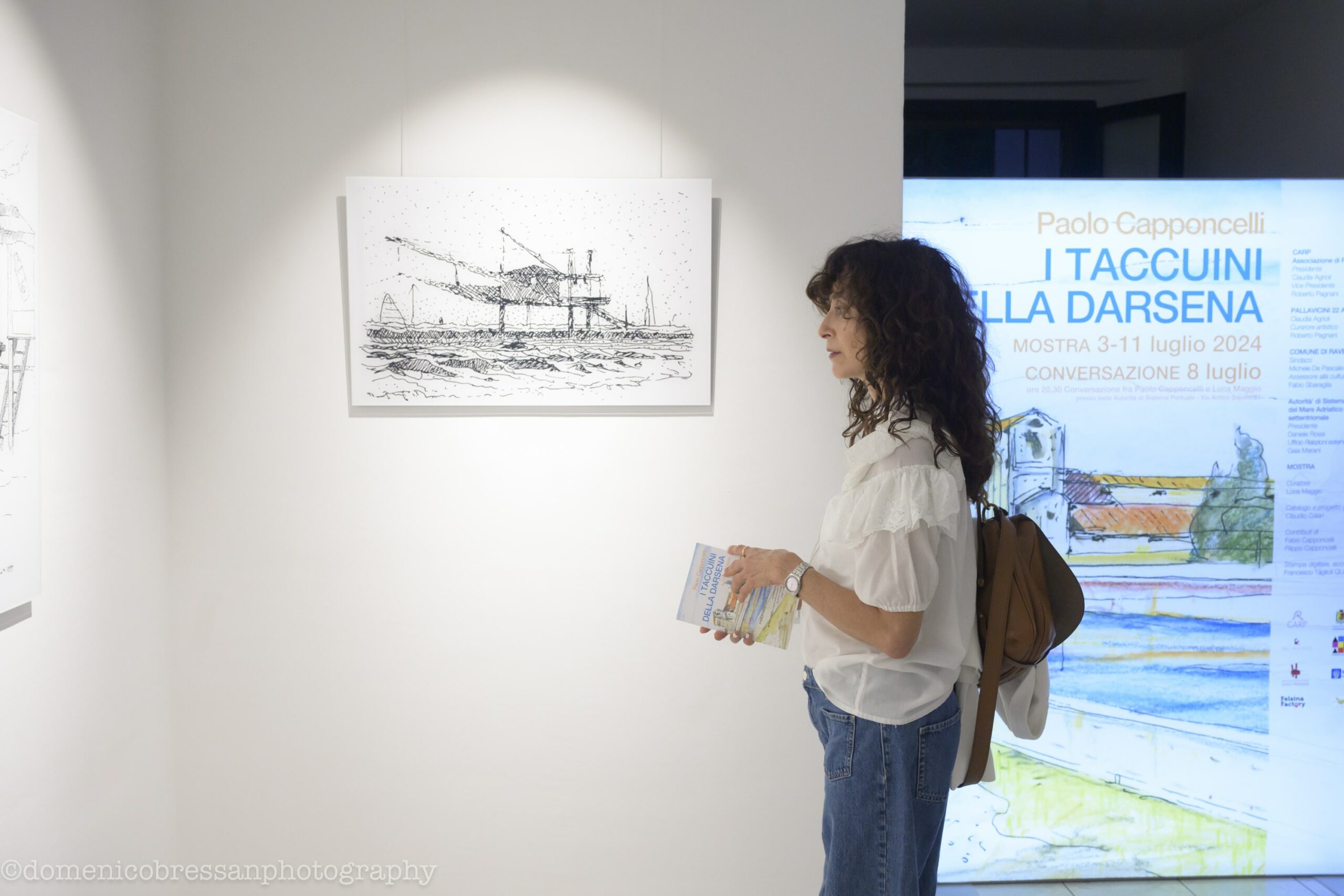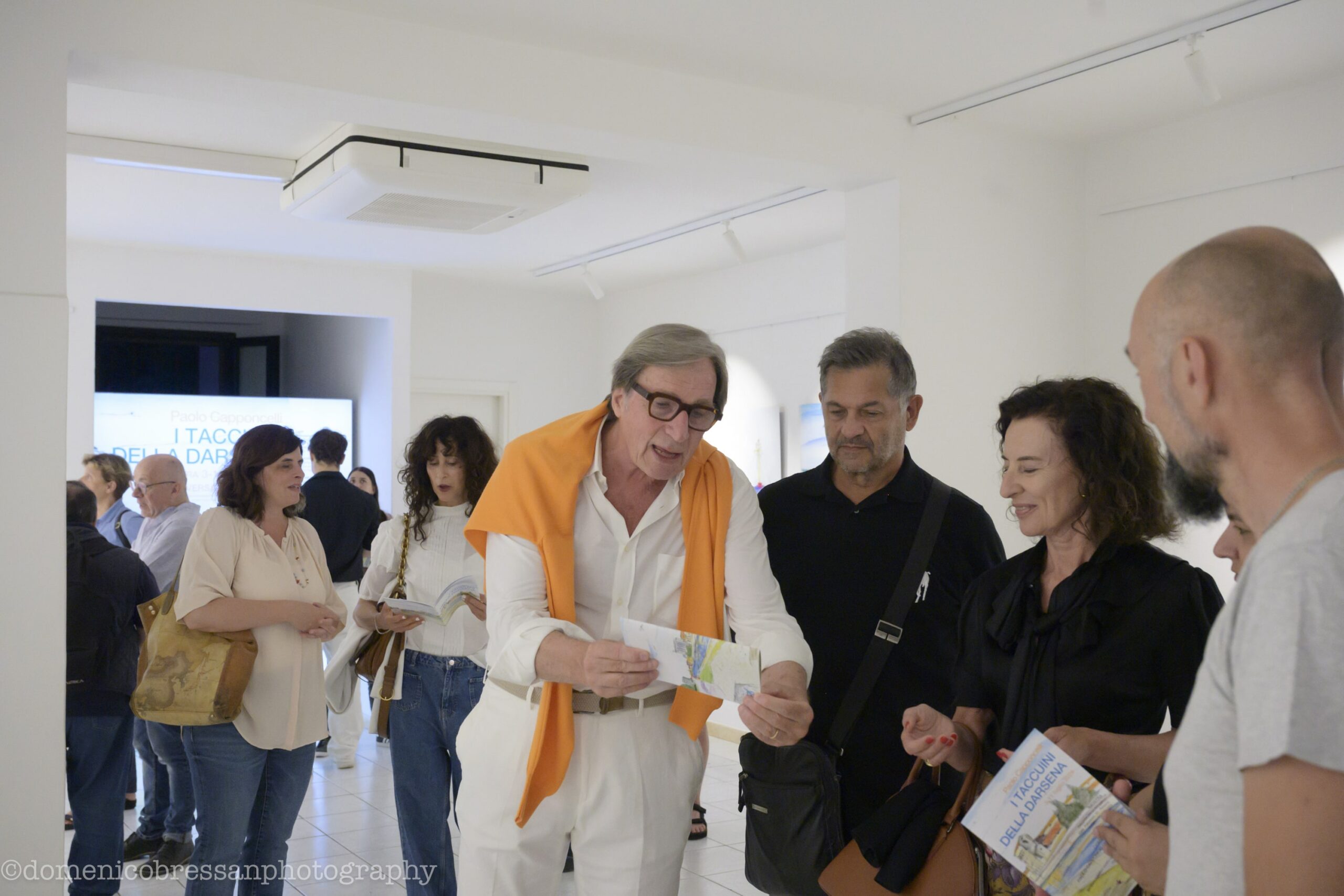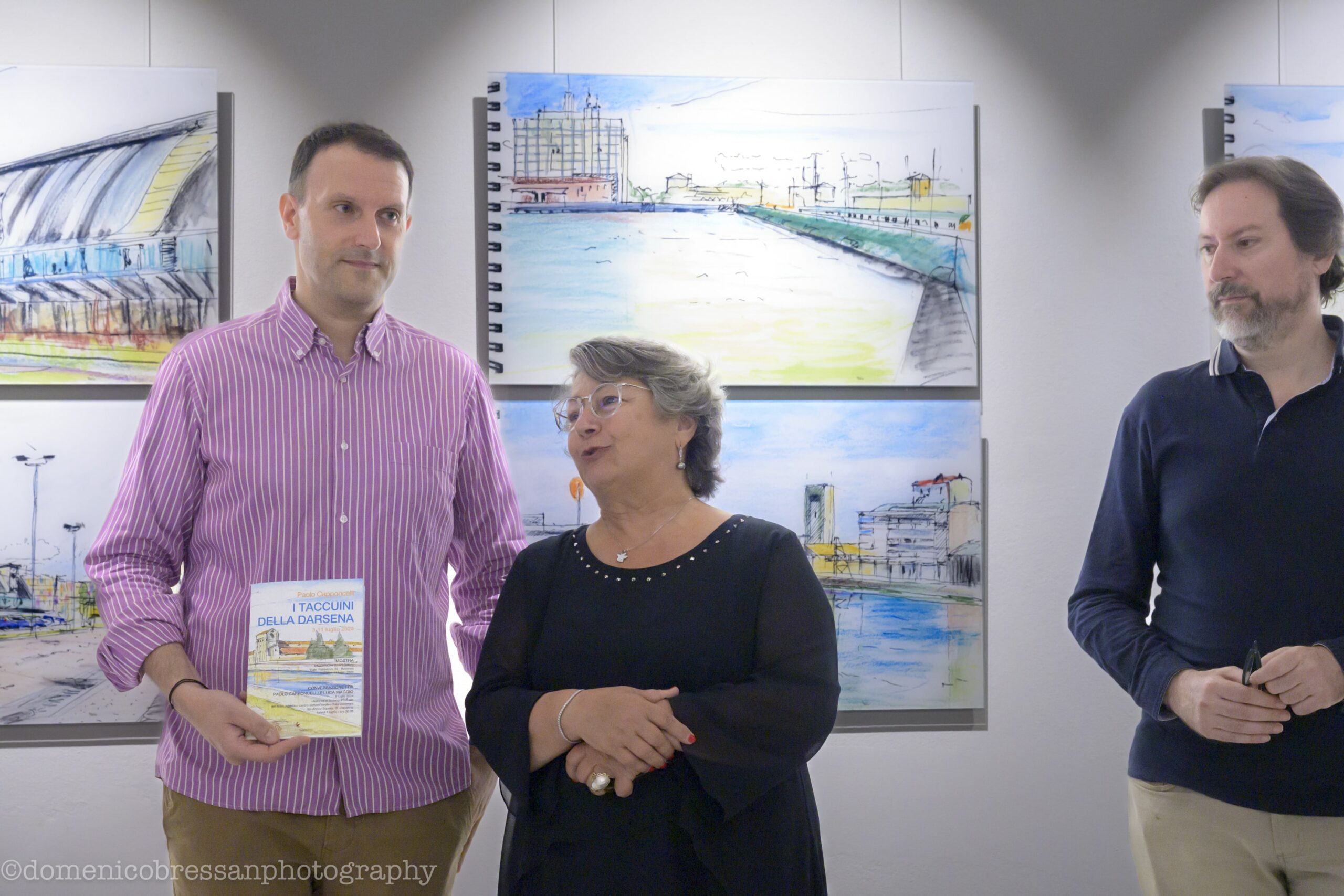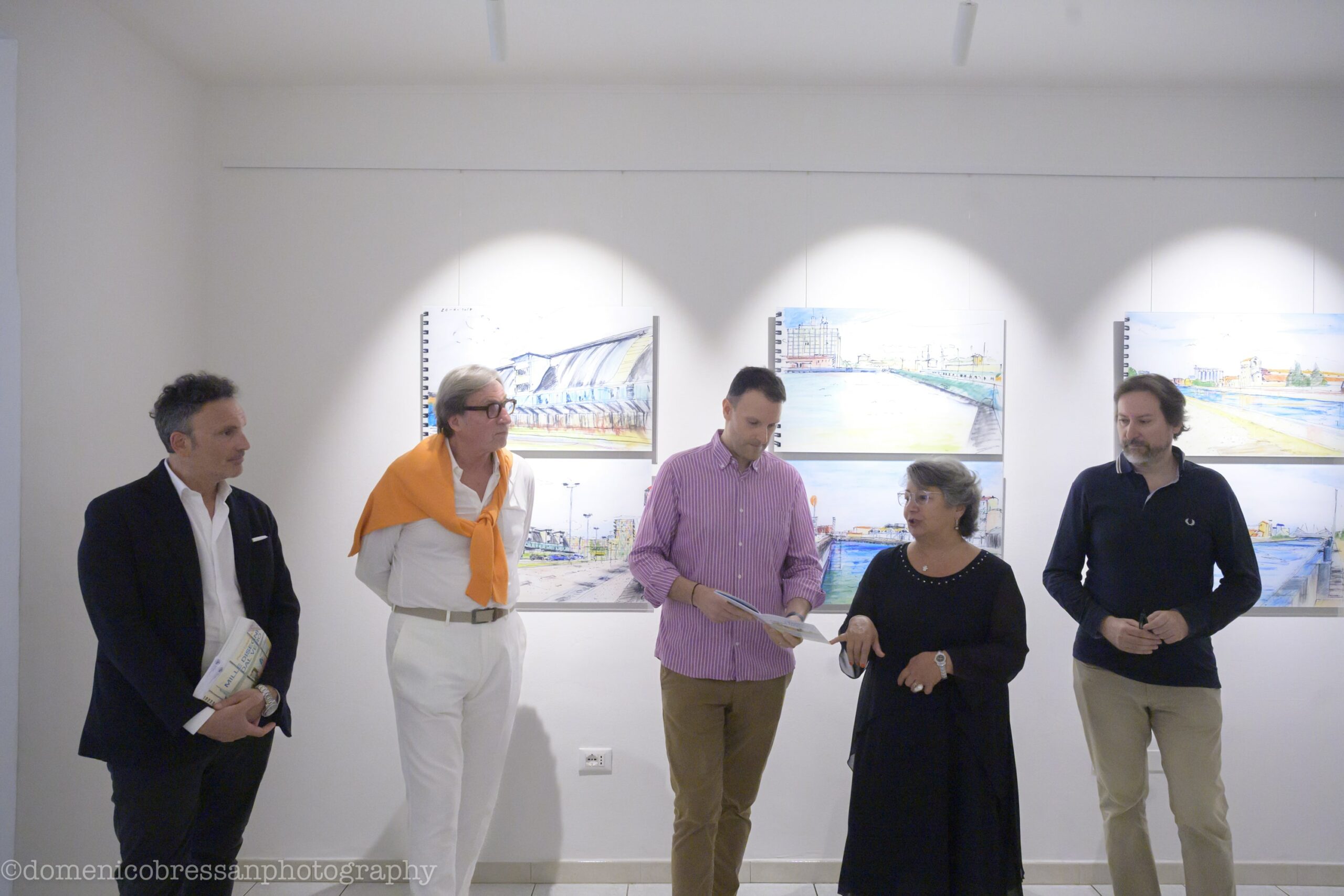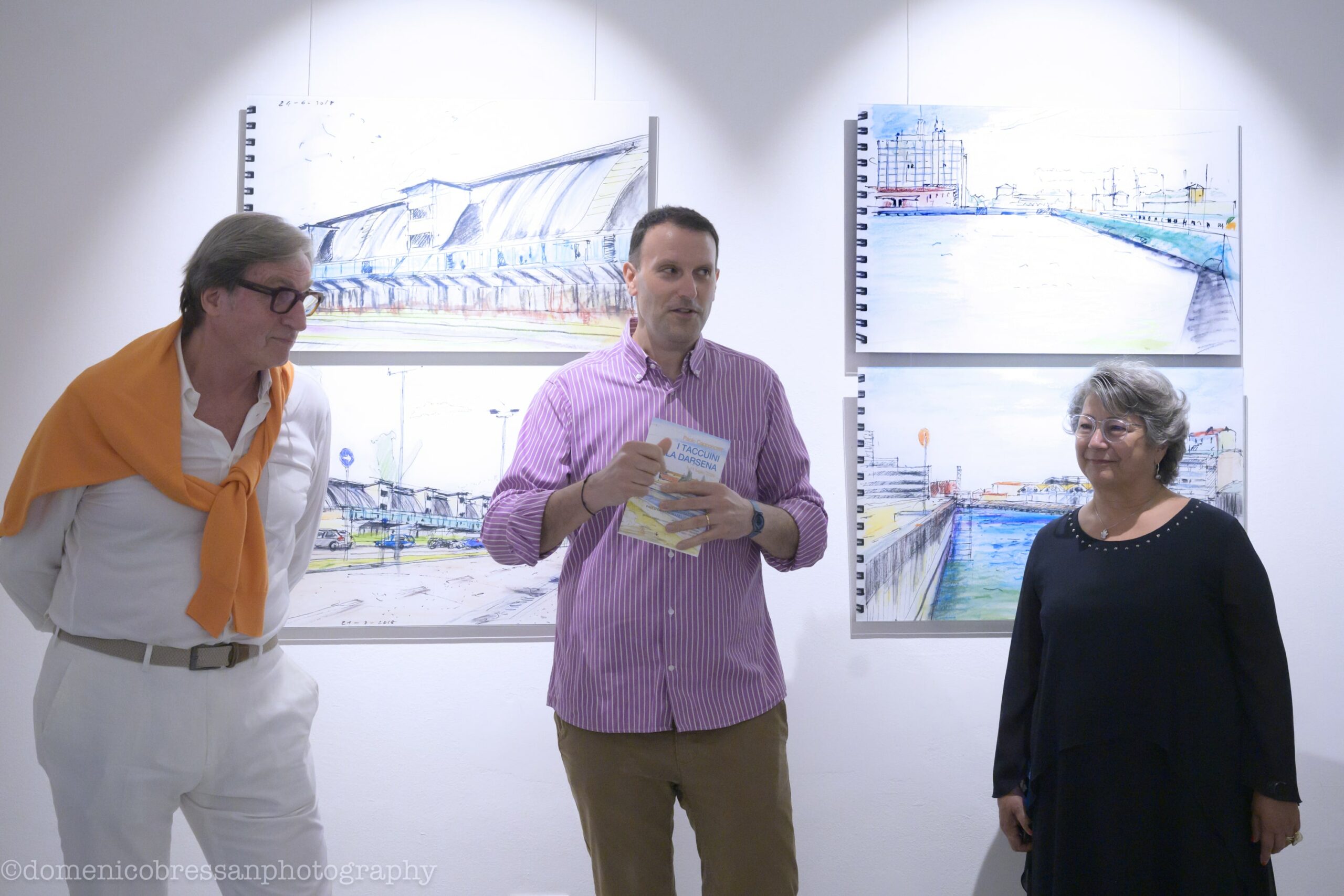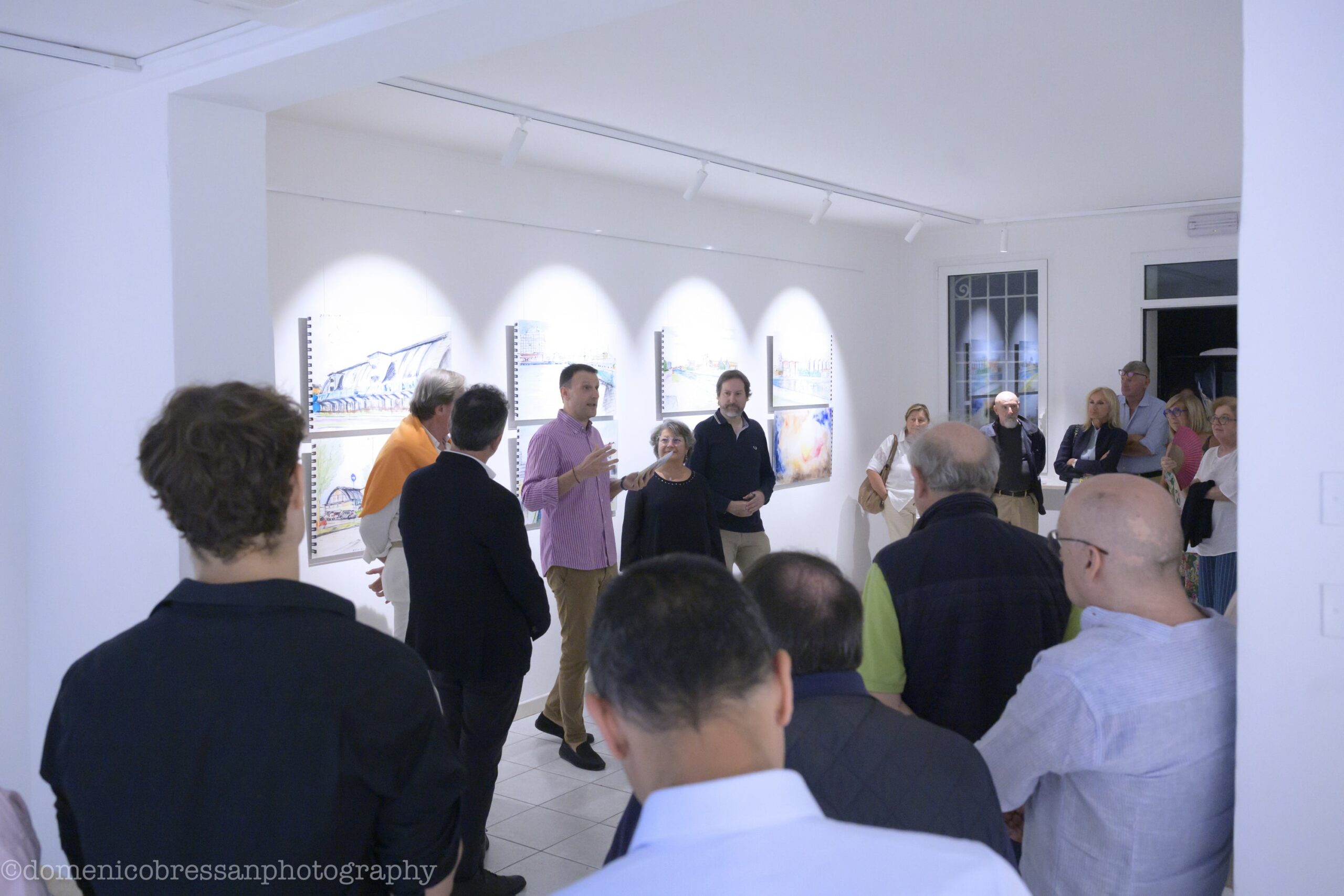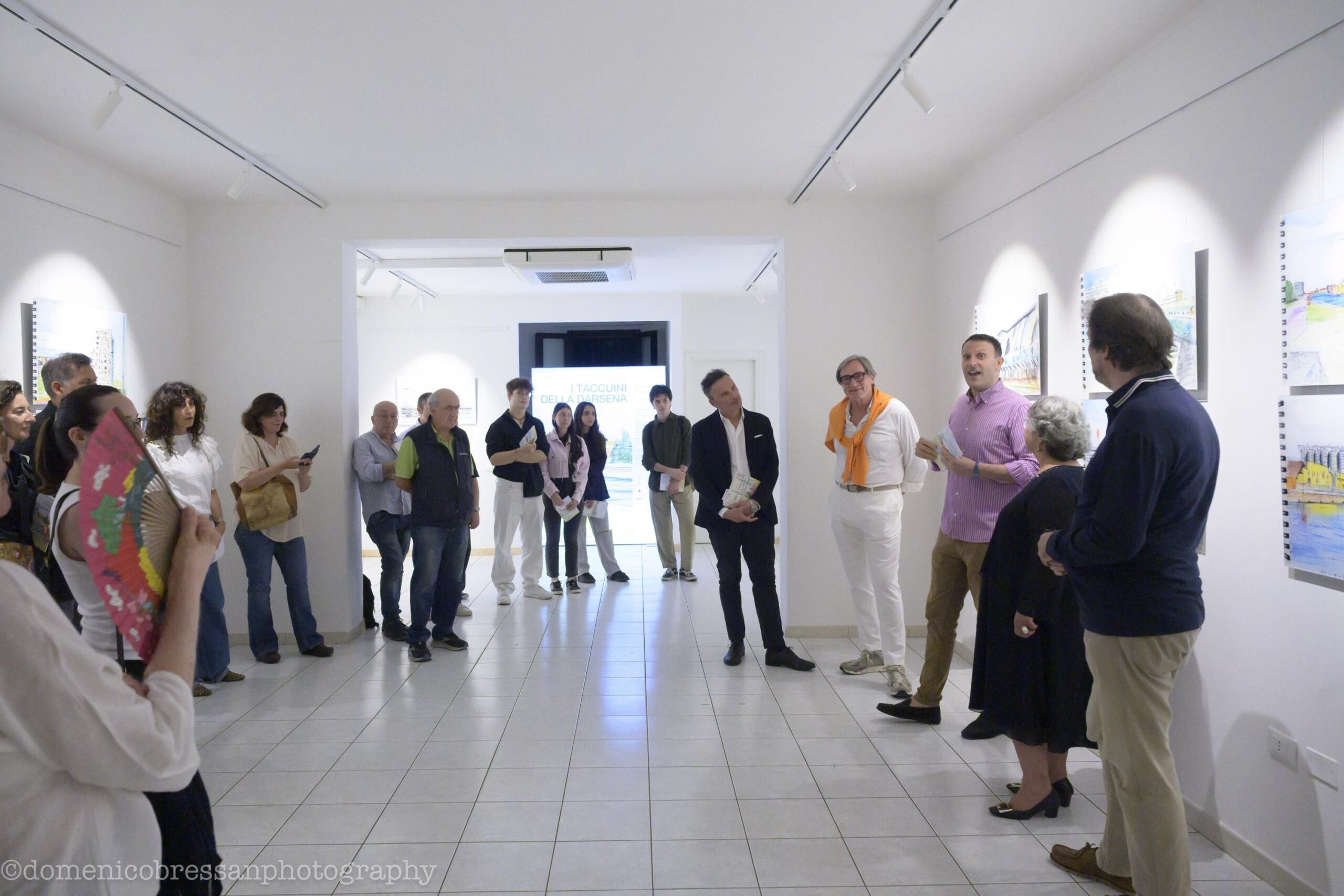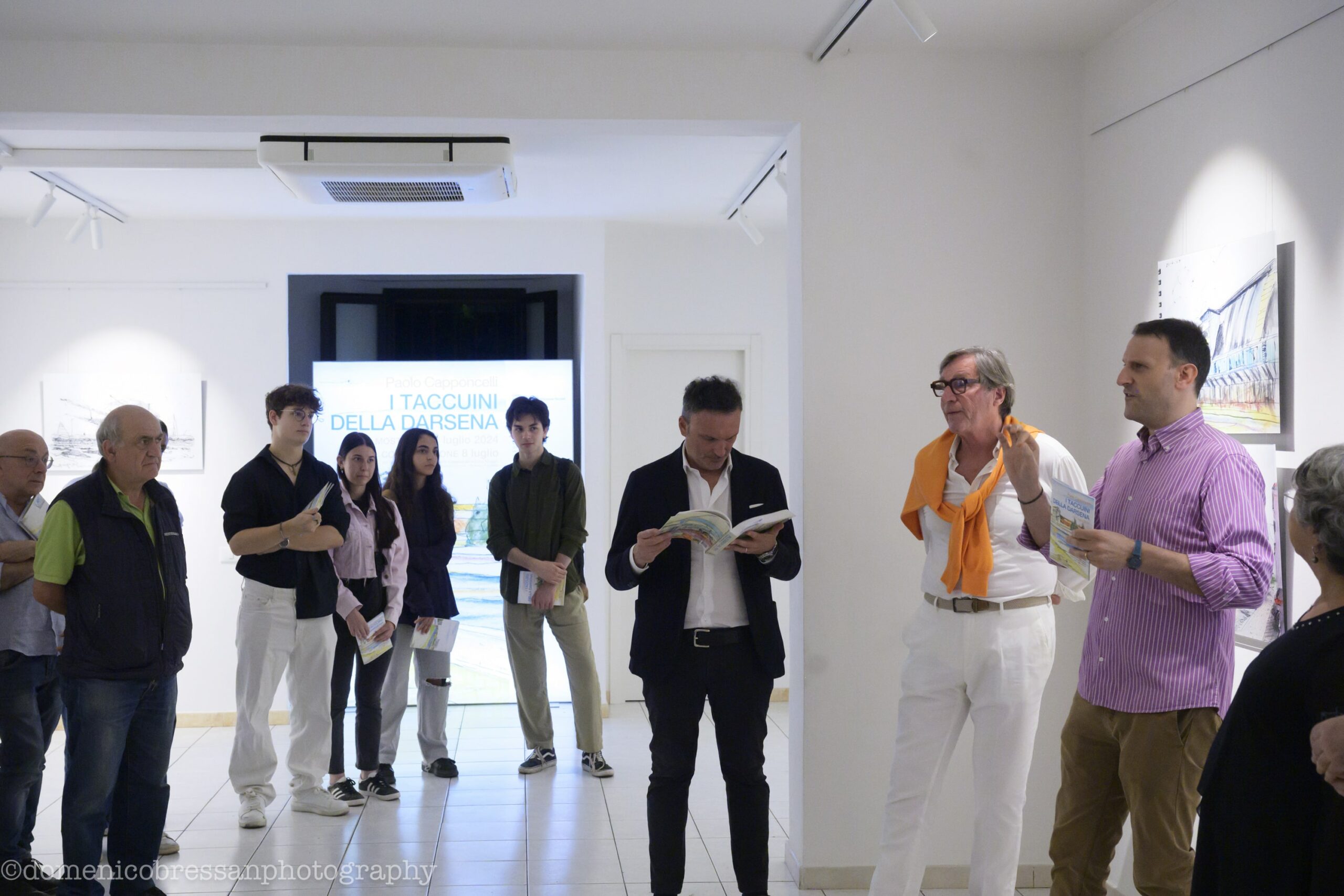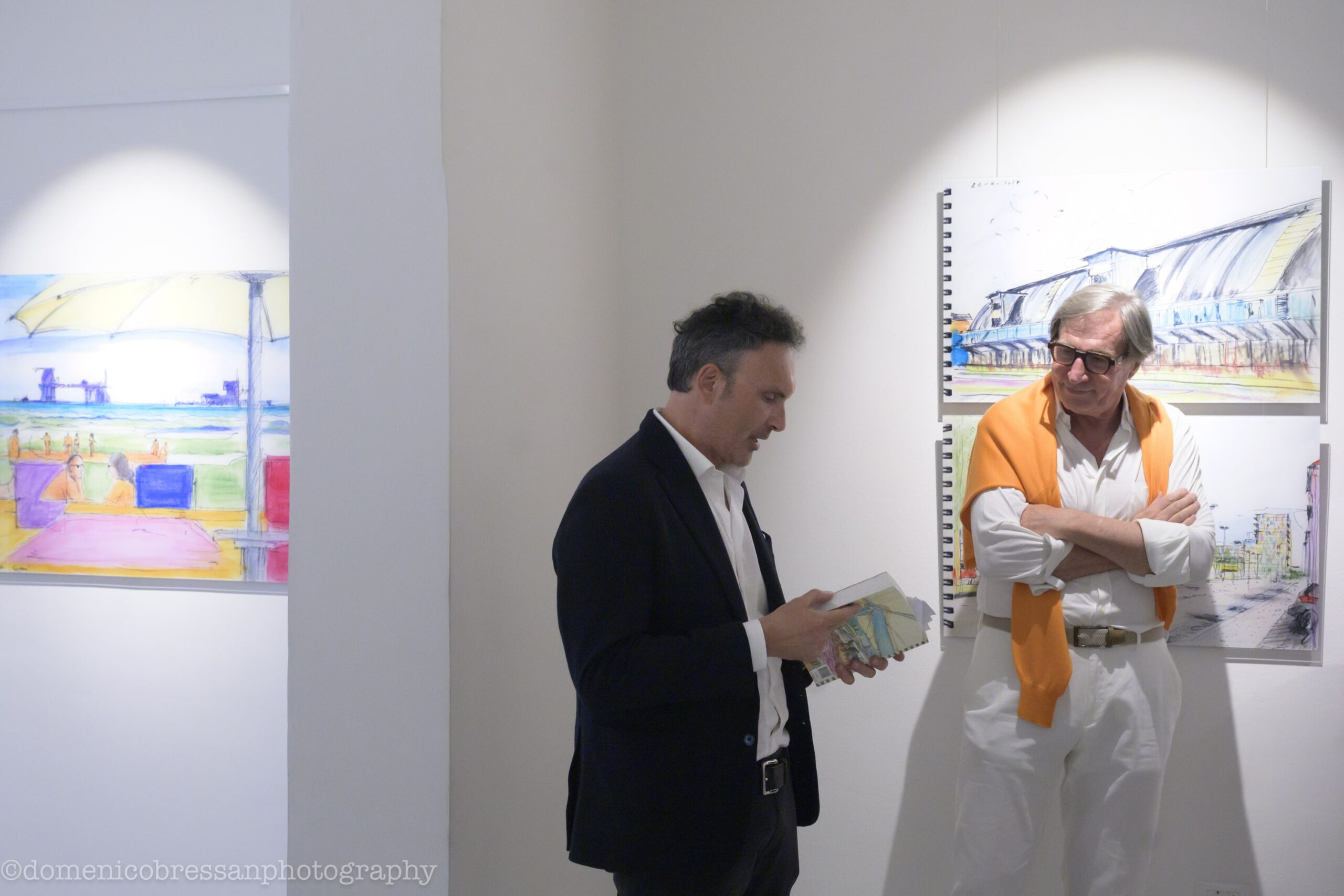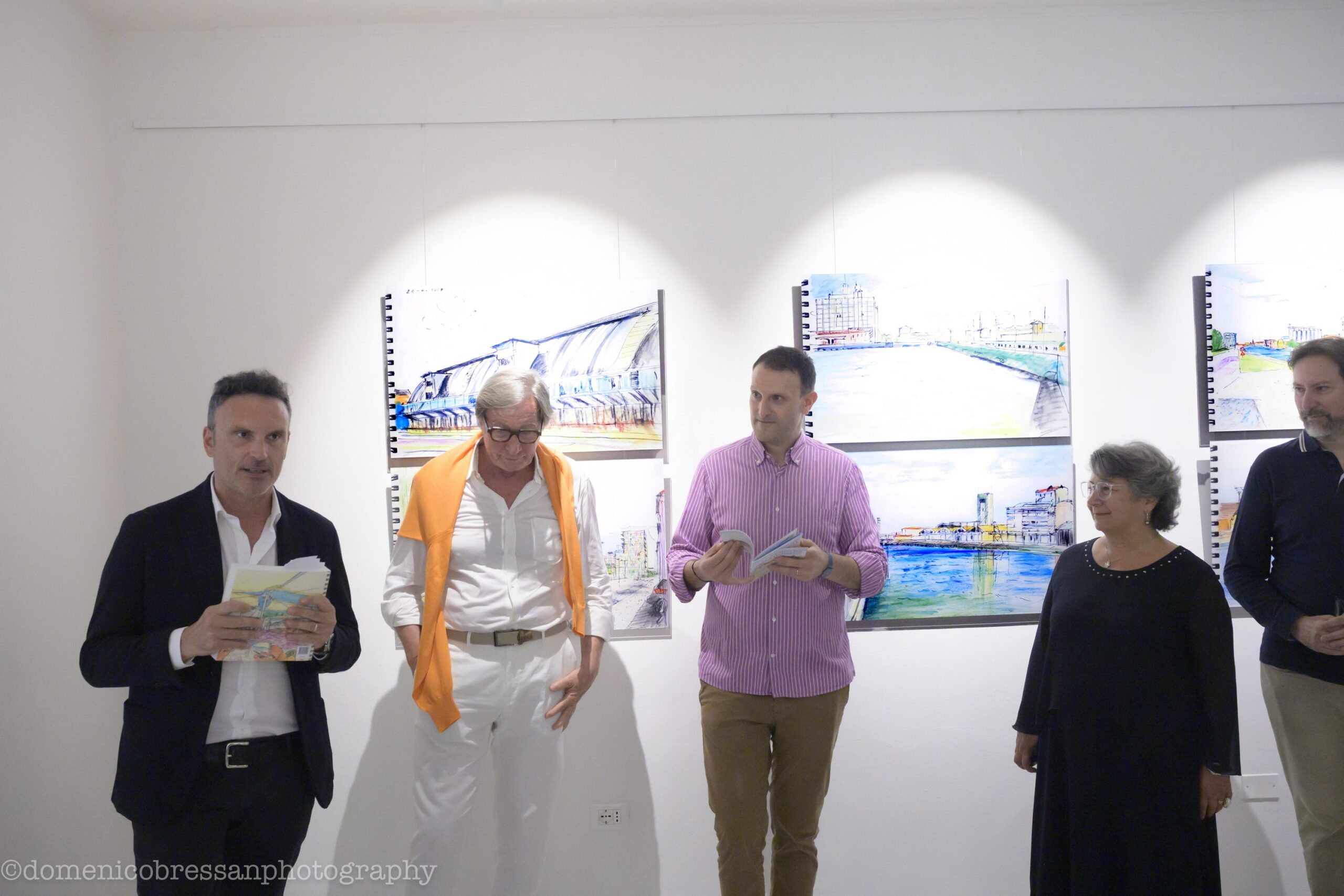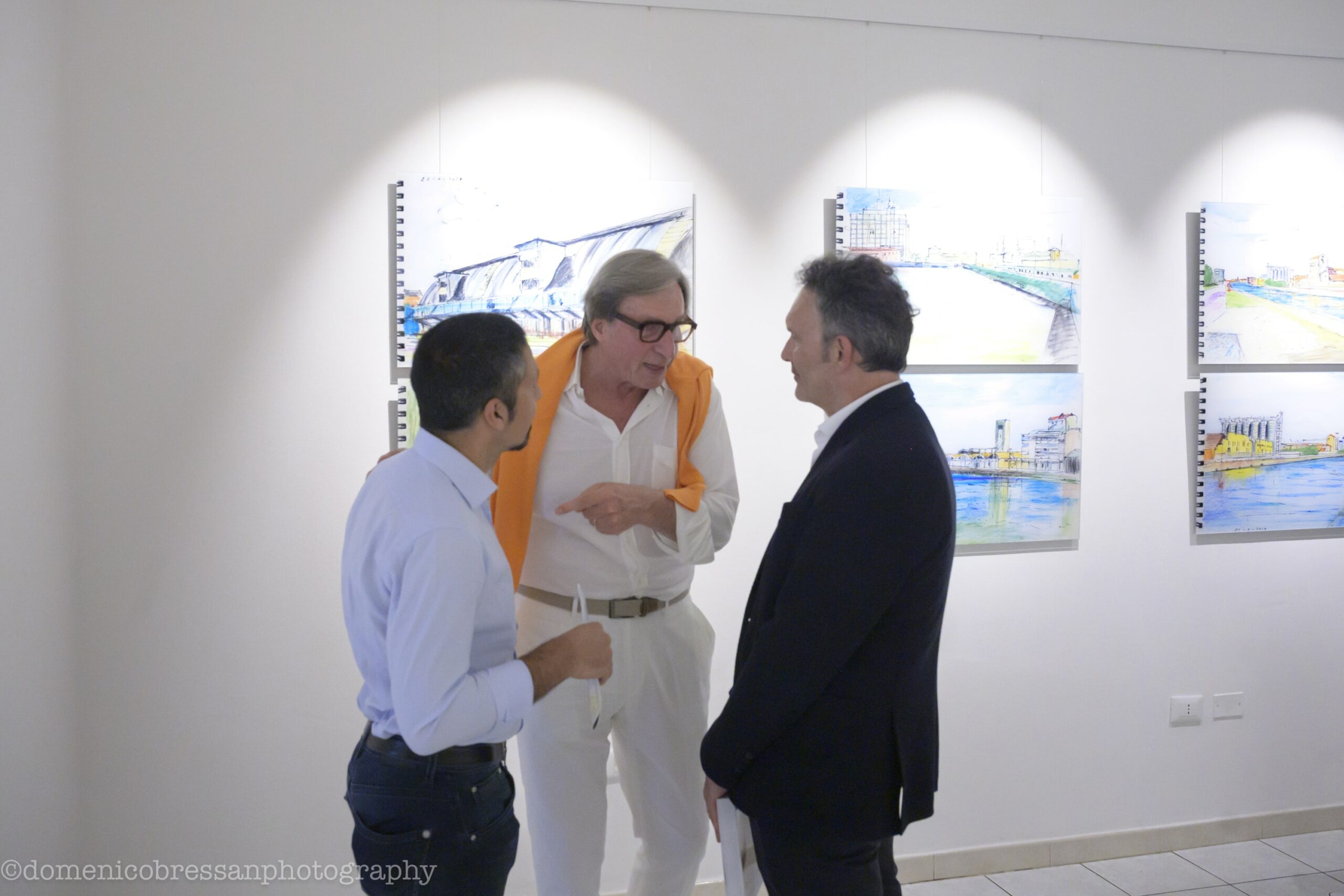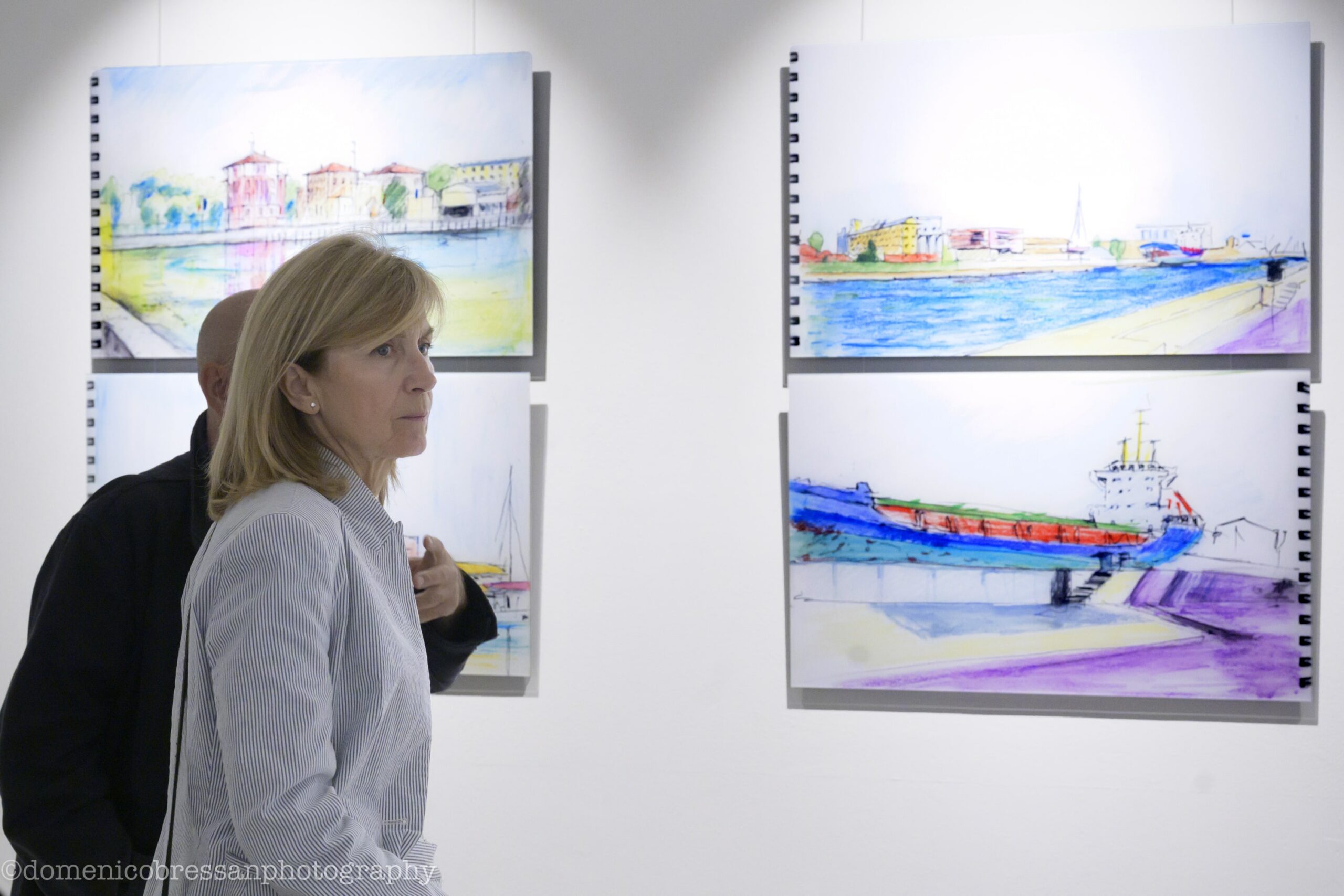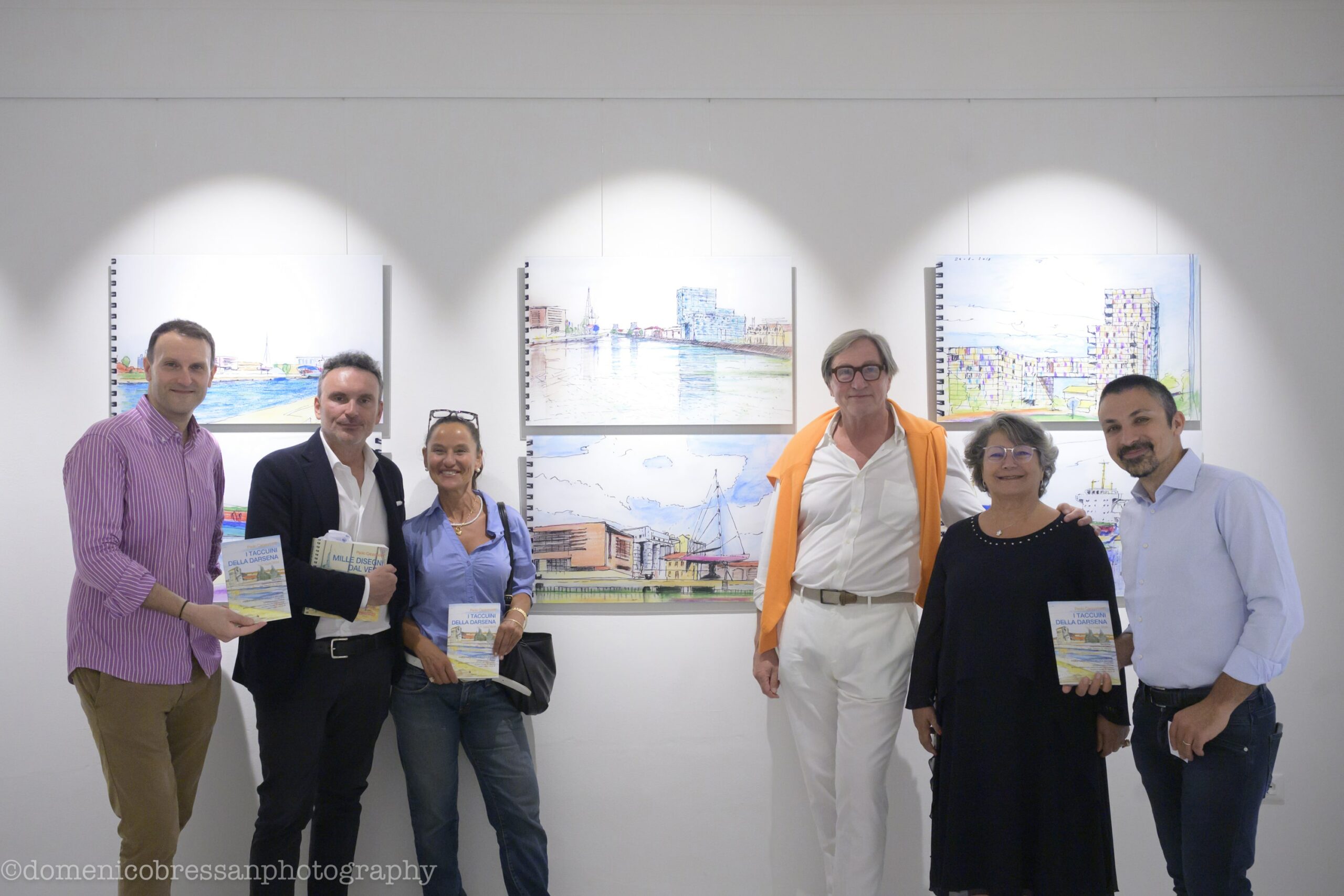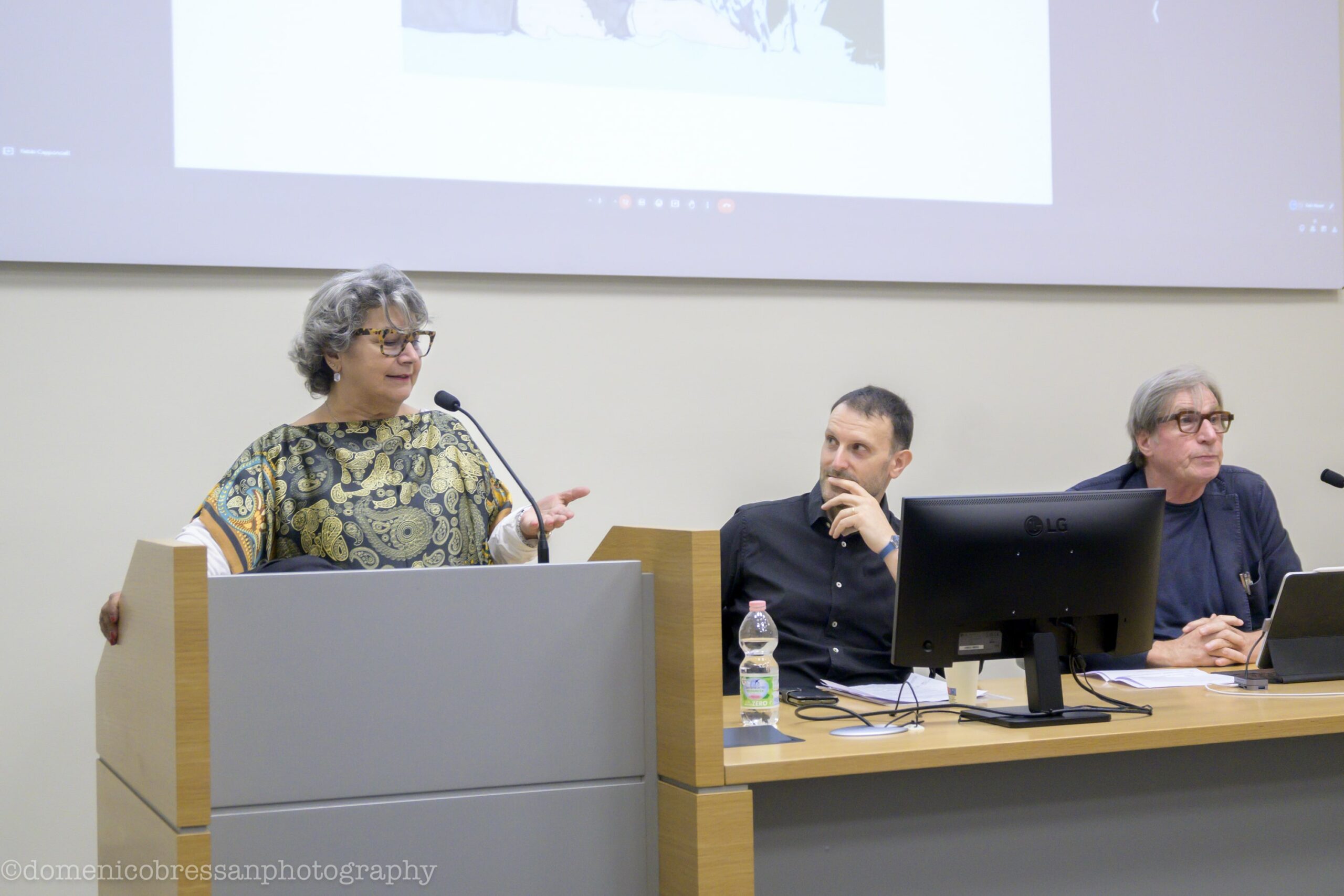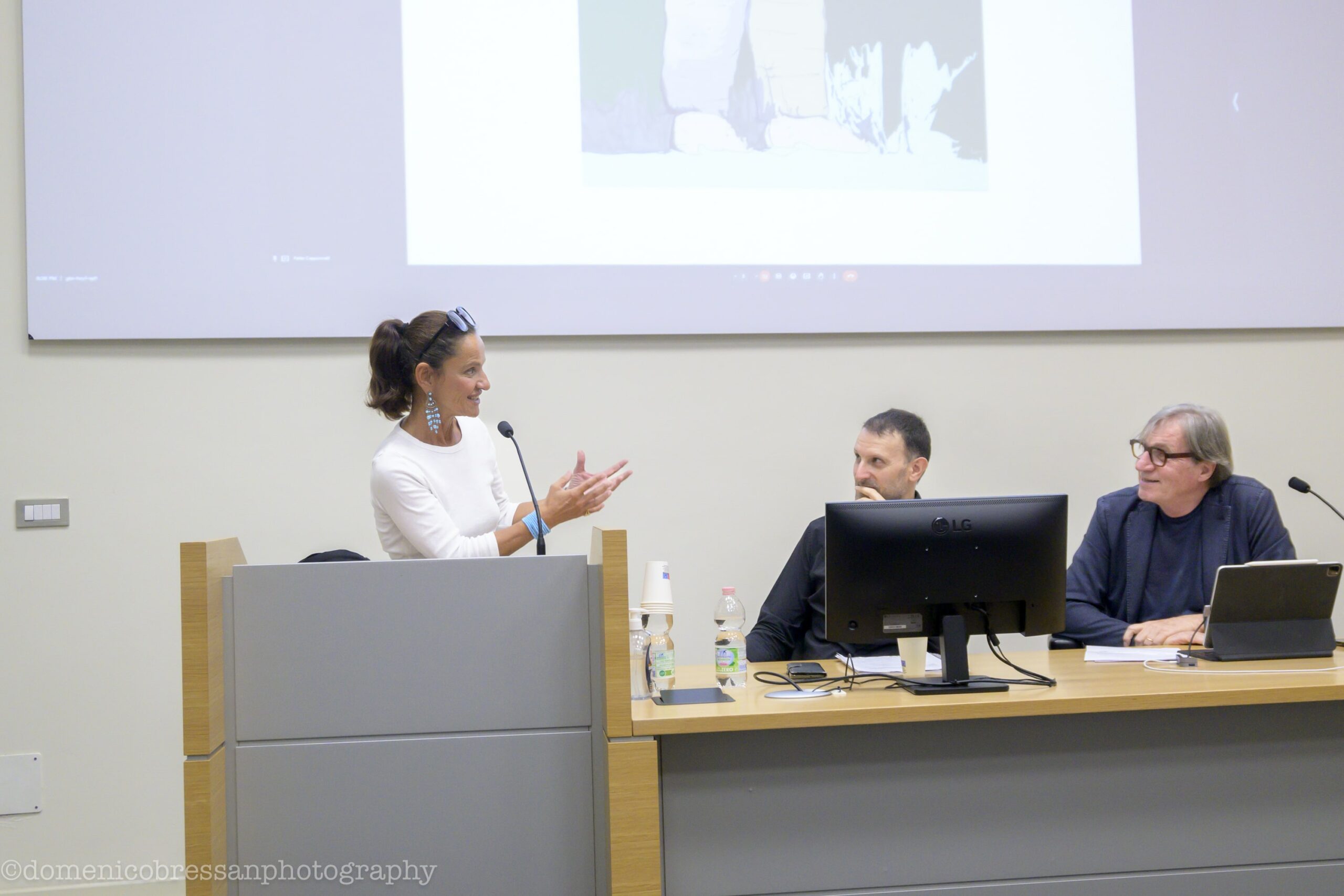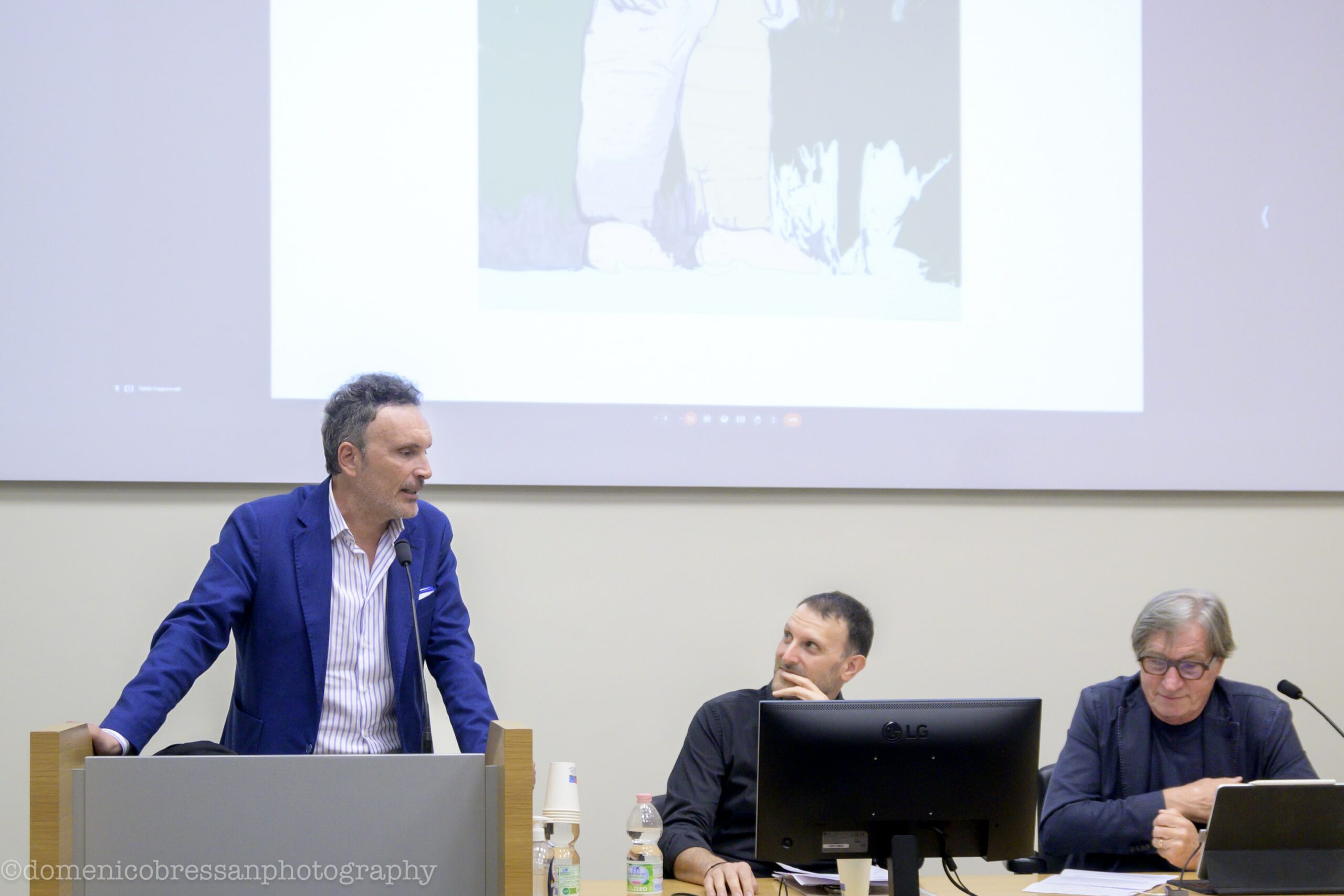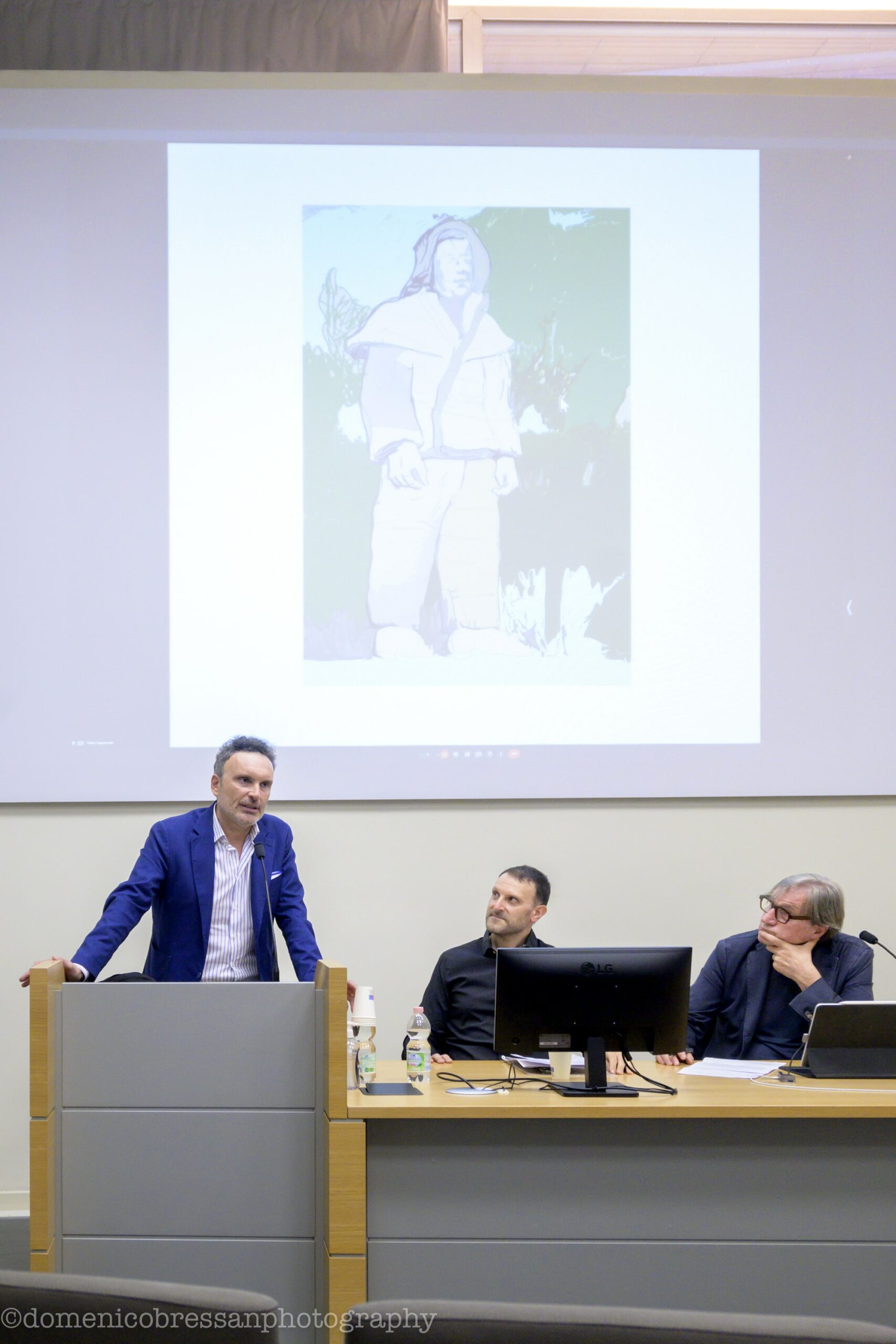Paolo Capponcelli
From 3 to 11 July 2024
The Exhibition
The exhibition space Pallavicini 22 will host the first exhibition dedicated to Paolo Capponcelli's notebooks after the first presentation of the volume "Mille disegni dal vero. Architetture Luoghi Personaggi. Carnets 1980/2023, Forlì 2024" at the Museo Civico Archeologico in Bologna on May 16th last.
Wednesday, July 3, 2024 is planned the opening of Paolo Capponcelli's solo exhibition "I TACCUINI DELLA DARSENA", curated by Luca Maggio. The exhibition catalog, with graphic design by Claudio Calari, includes Luca Maggio's critical text accompanied by a note from the artist.
On the evening of Monday, July 8, a conversation between Luca Maggio and Paolo Capponcelli is scheduled in the conference room of the Port System Authority of the Central-Northern Adriatic Sea in Ravenna. The artist and curator will be present from 8:00 pm in the area in front to enjoy the lights and colors of the sunset on the city dock.
The Artist
Capponcelli has an ancient passion for Ravenna, which he has frequented since he was young and which he calls “an extraordinary city of Emilia-Romagna with original monuments, unique in the world for their historical and artistic importance”. But the Dock of Ravenna is the beating heart of his rediscovery, his declared “true love”. Taking his bicycle and reaching this district of the city whenever possible represents for him a practice of freedom “because”, he says, “even though I have ties of acquaintance, I have no other interest than that of discovering its places”.
His “half hours”, aimed at outlining the buildings that make up the anthropic-natural landscape, such as the mosaic condominium building by Cino Zucchi, or that of the Port Authority, or the pubs and clubs that have opened over time by converting old abandoned warehouses, or others full of fascination precisely because they are in a state of abandonment, such as the so-called Sigarone together with further industrial fragments, or mobile objects such as the ship Lady Aziza and the Moro di Venezia, have suggested to him, starting from drawings of about 15x20 cm, the enlargements on plexiglass (about 50x80 cm) of this exhibition, with prints that are now glossier to restore the marine and chromatic liquidity of the originals, and now more opaque for the black and whites of the platforms and hydrocarbon extraction wells.
For Capponcelli “drawing is free from rules” and “drawing from life” is “an indispensable (…) act”. It moves him, without shame in declaring it. He does not start with an analytical attitude, he does not record only for the purpose of mere future planning. And he does not perceive this as a defect, being in good company: for example, Louis Kahn, of whom he cites in one of his texts “the beautiful pictorial drawings (…) in Corinth” as “paintings of emotion”. This does not exclude that, in hindsight, some collected fragments were translated according to the karst and bizarre movements of memory into realizations implemented as PANSTUDIO, from the underground room of the Pinacoteca di Bologna in which the ceiling of the auditorium of the Louvre by the architect Pei is reinterpreted, to the paved ramps of Piazza Nettuno that preserve the reminiscences “of similar situations in Arezzo and Pistoia where the inclined planes meet the steps, cutting them out geometrically.”
